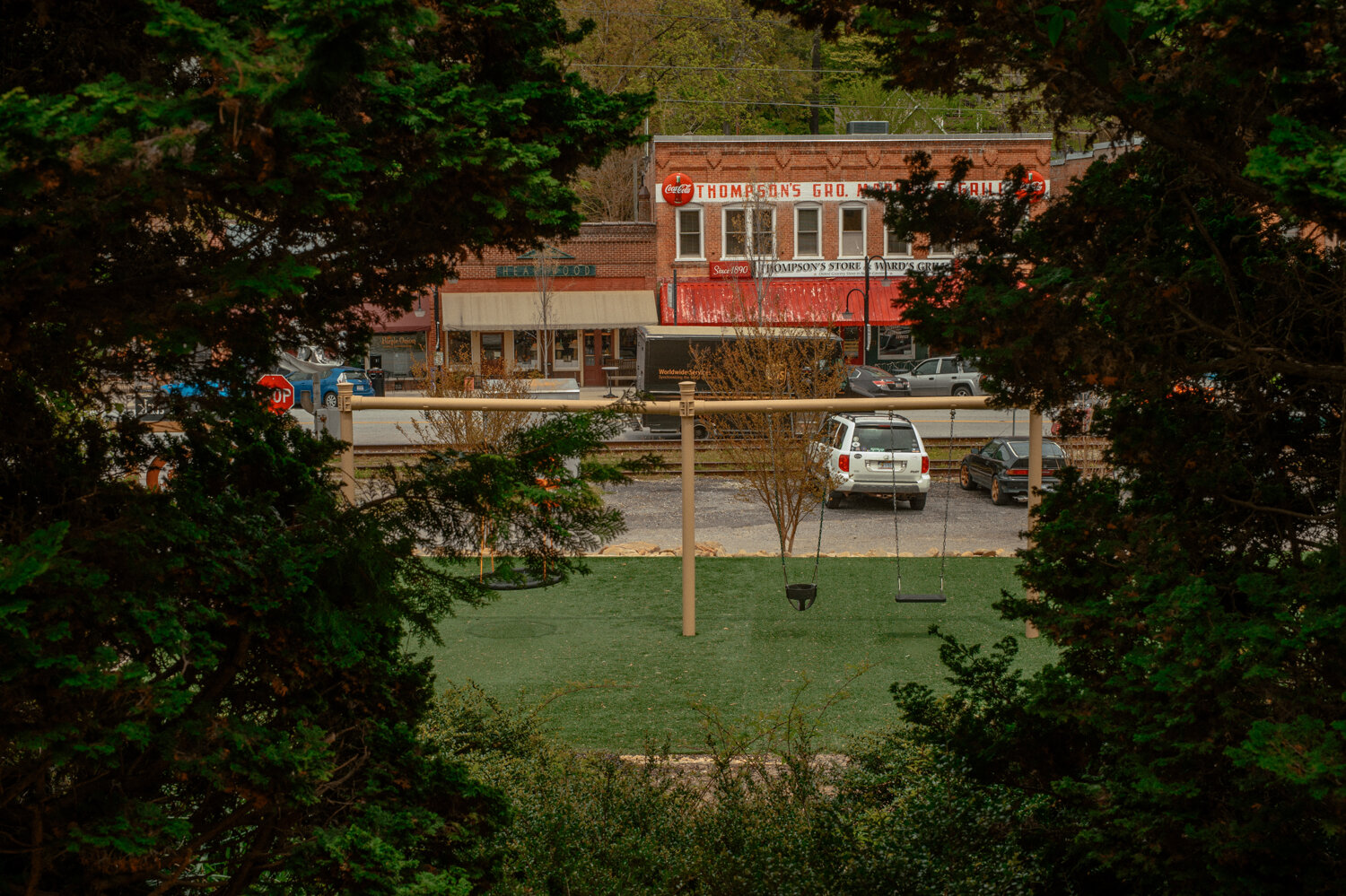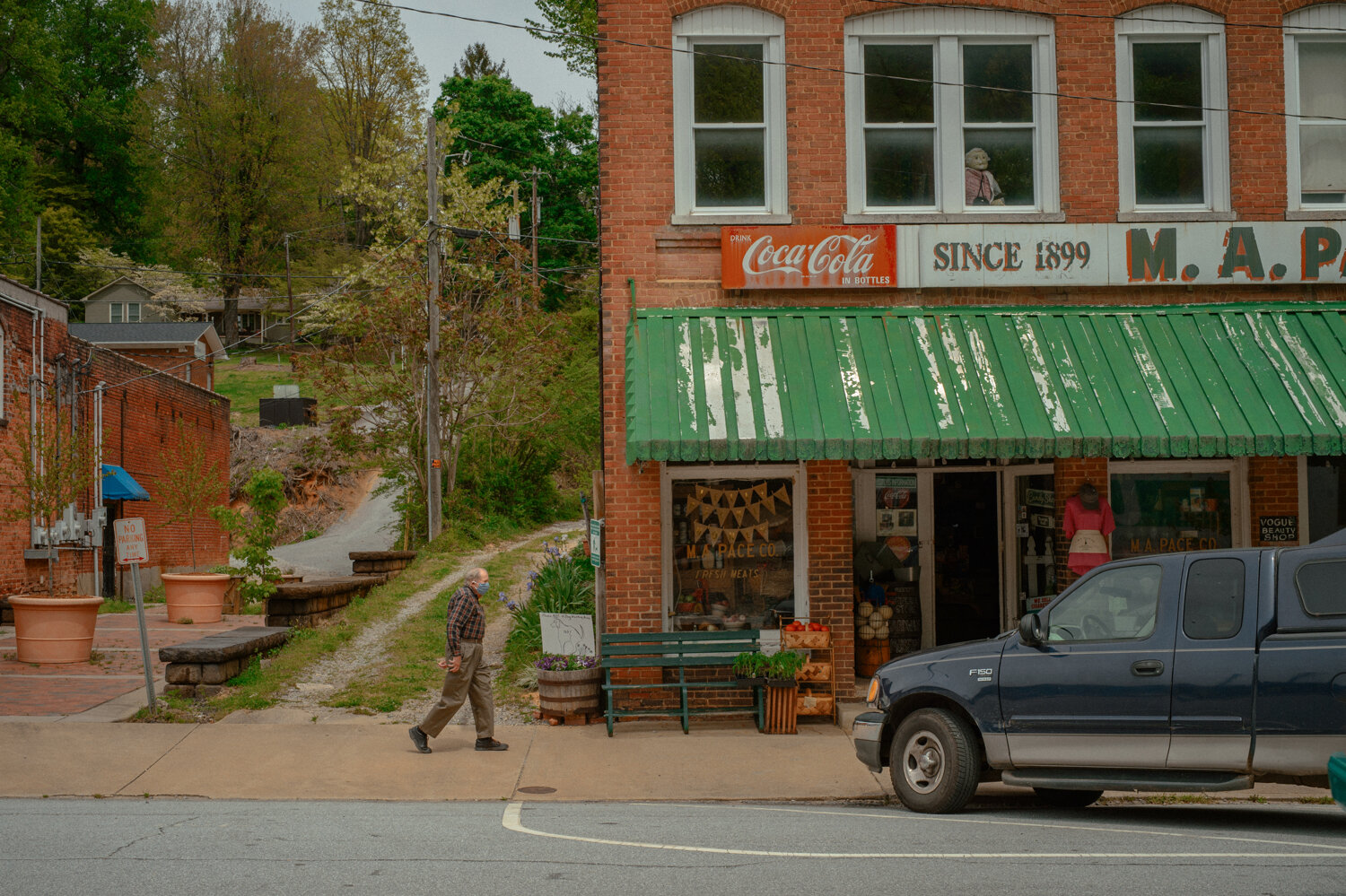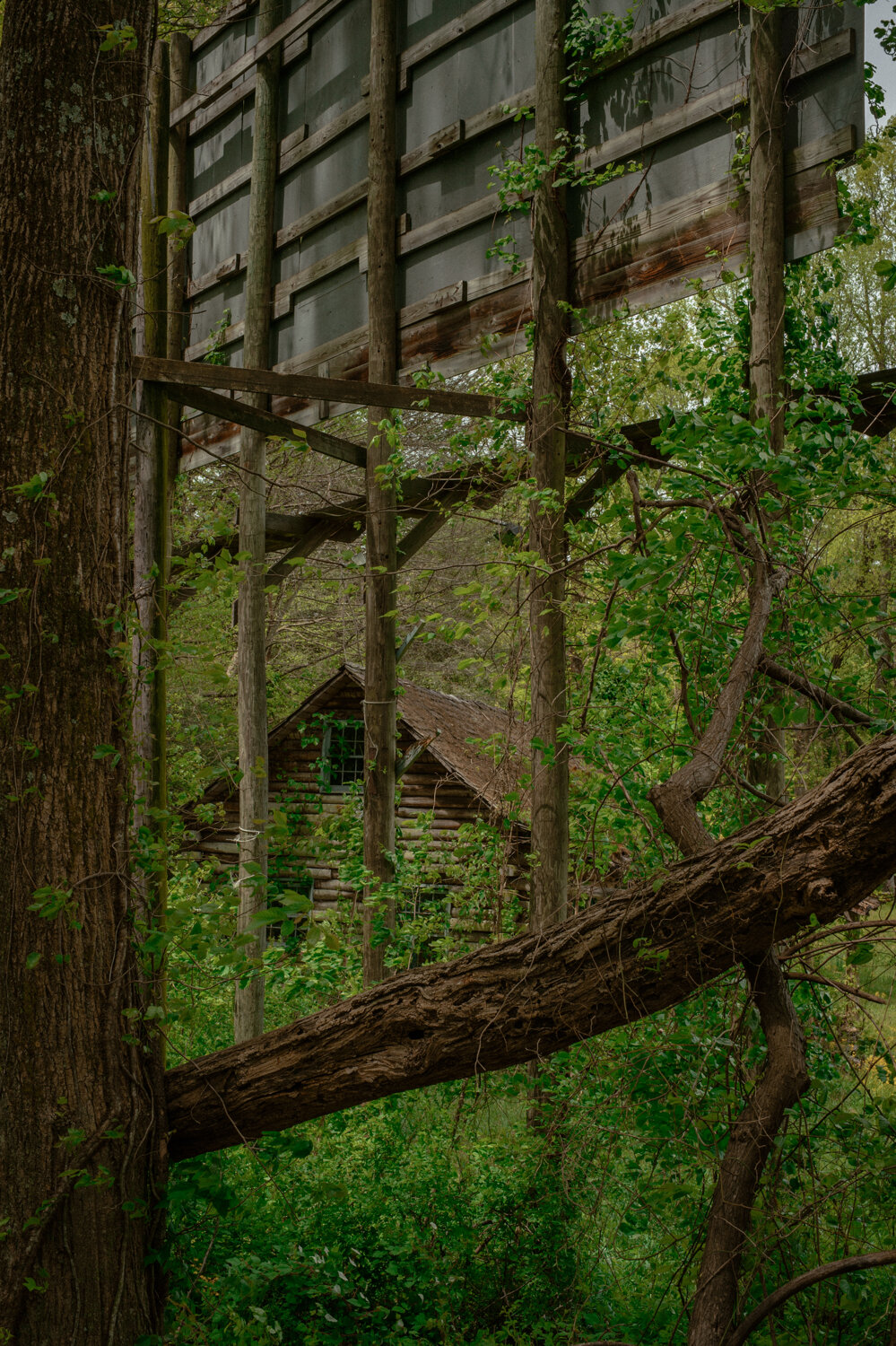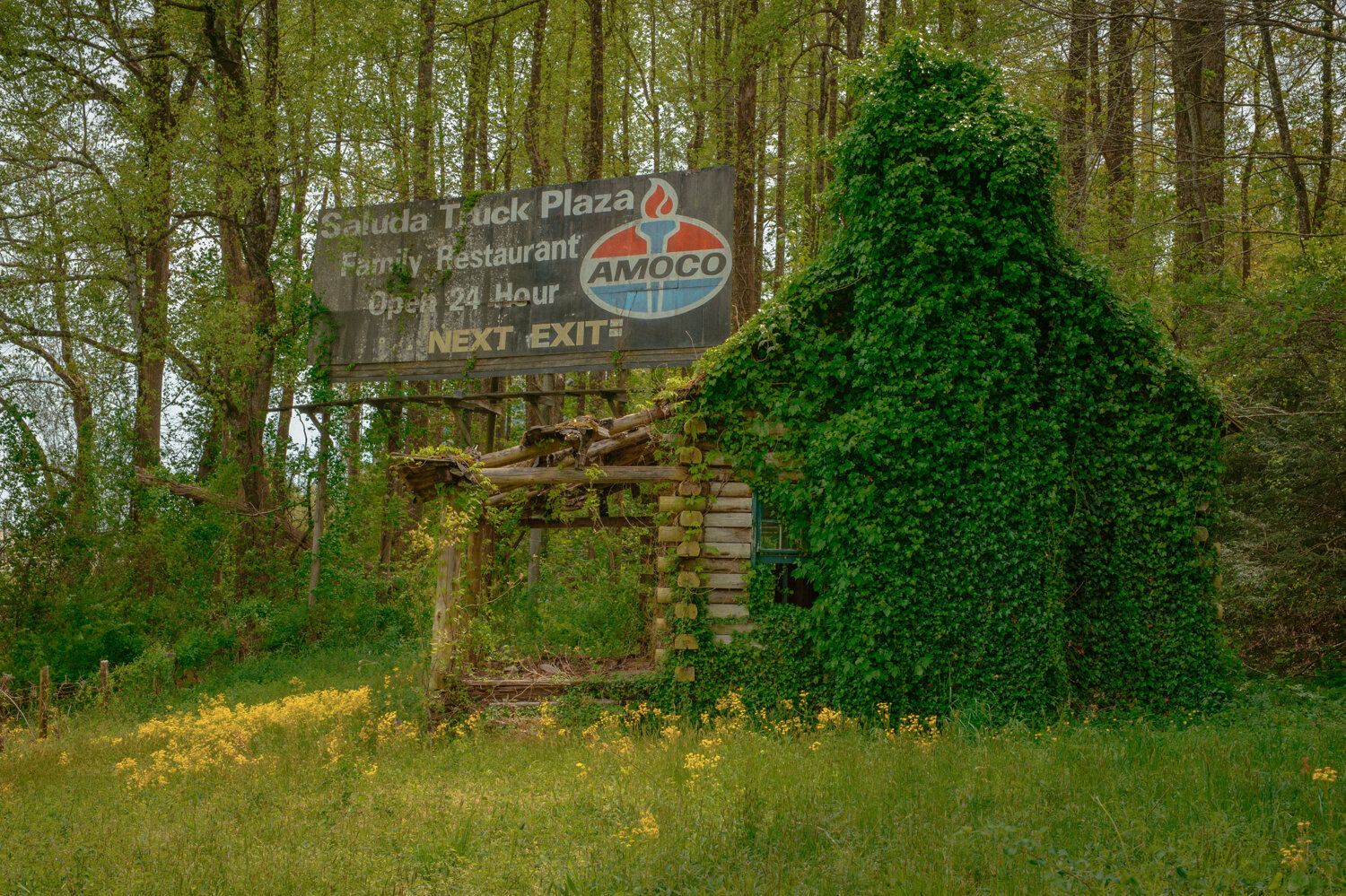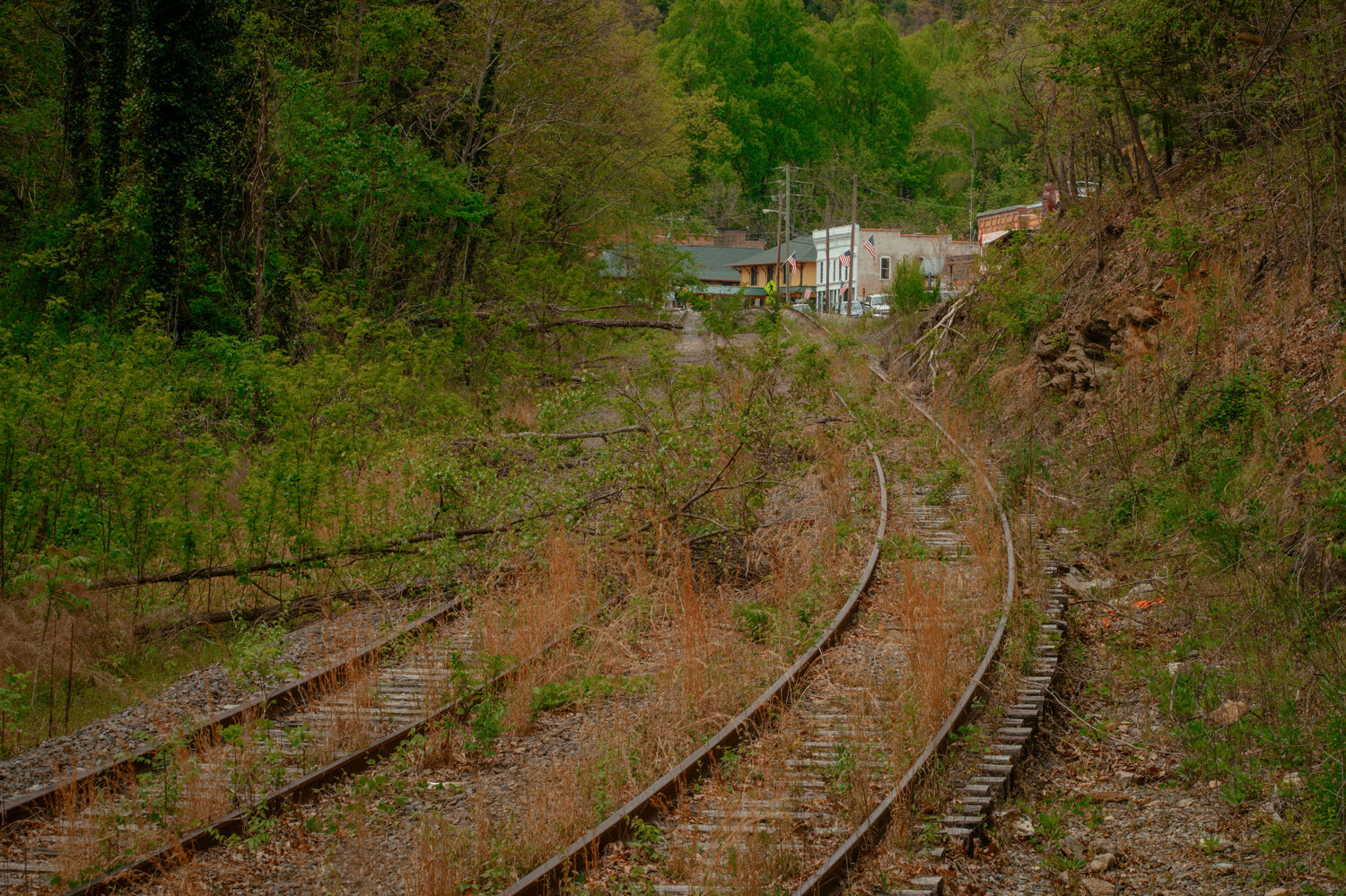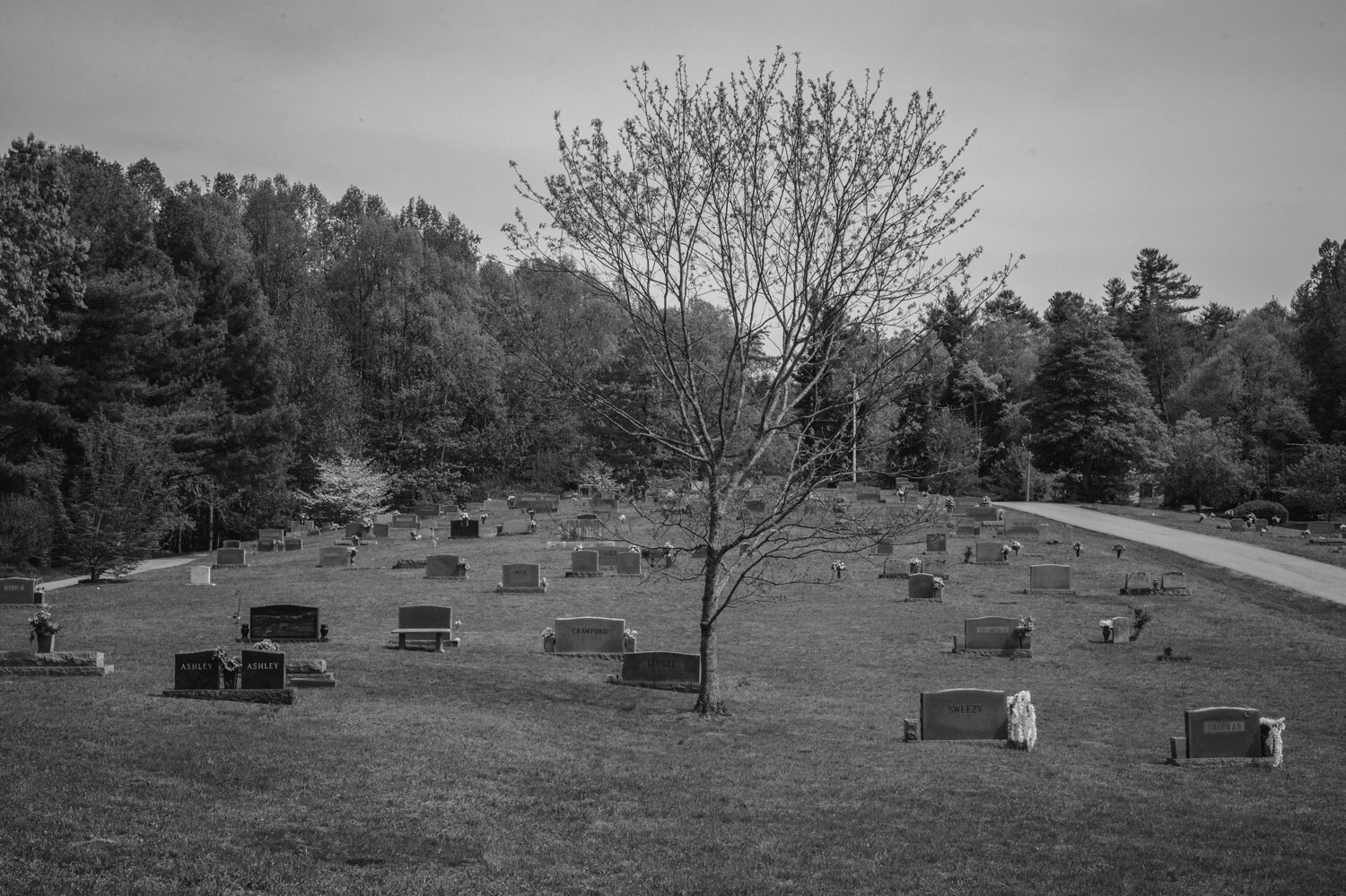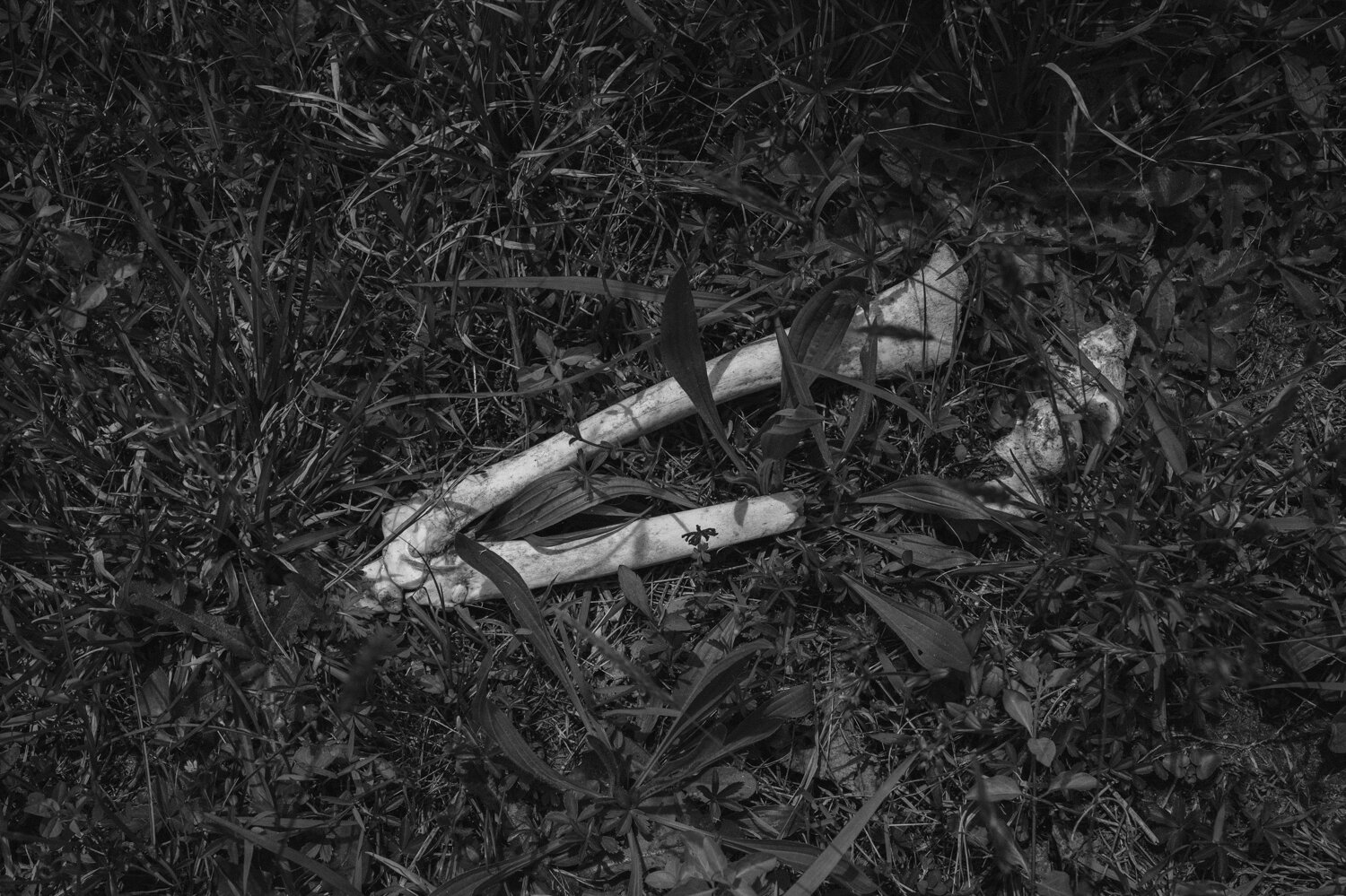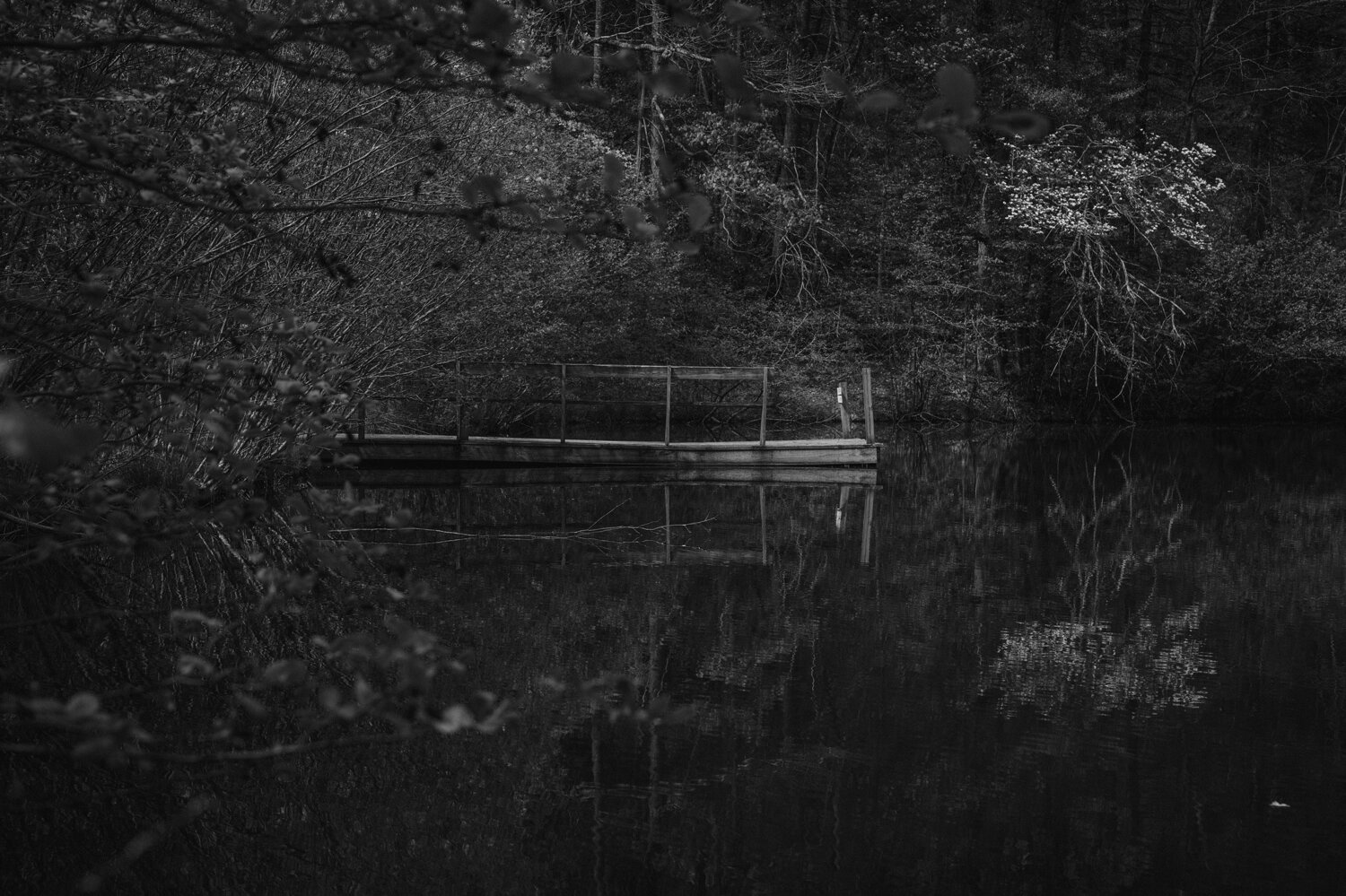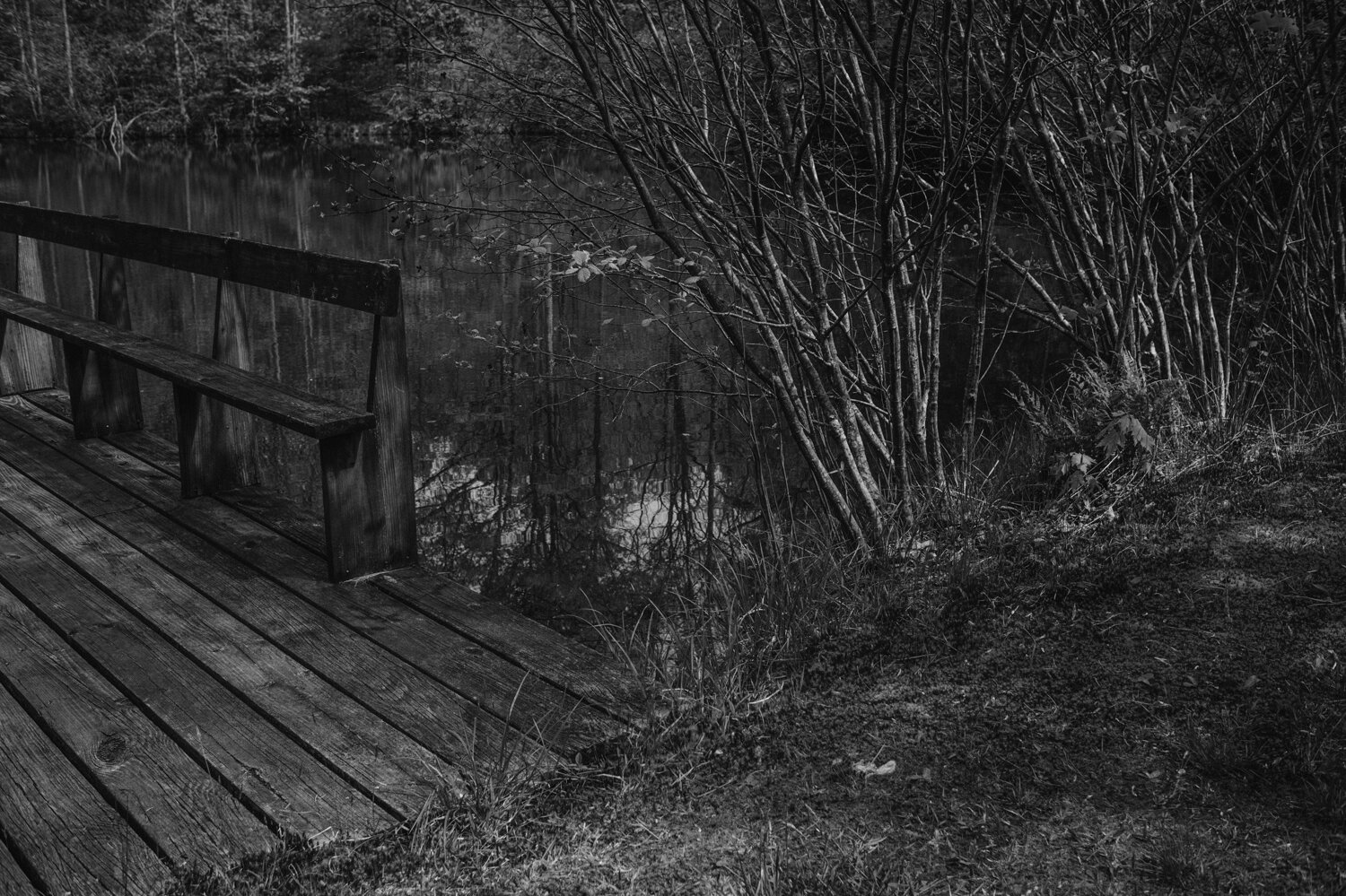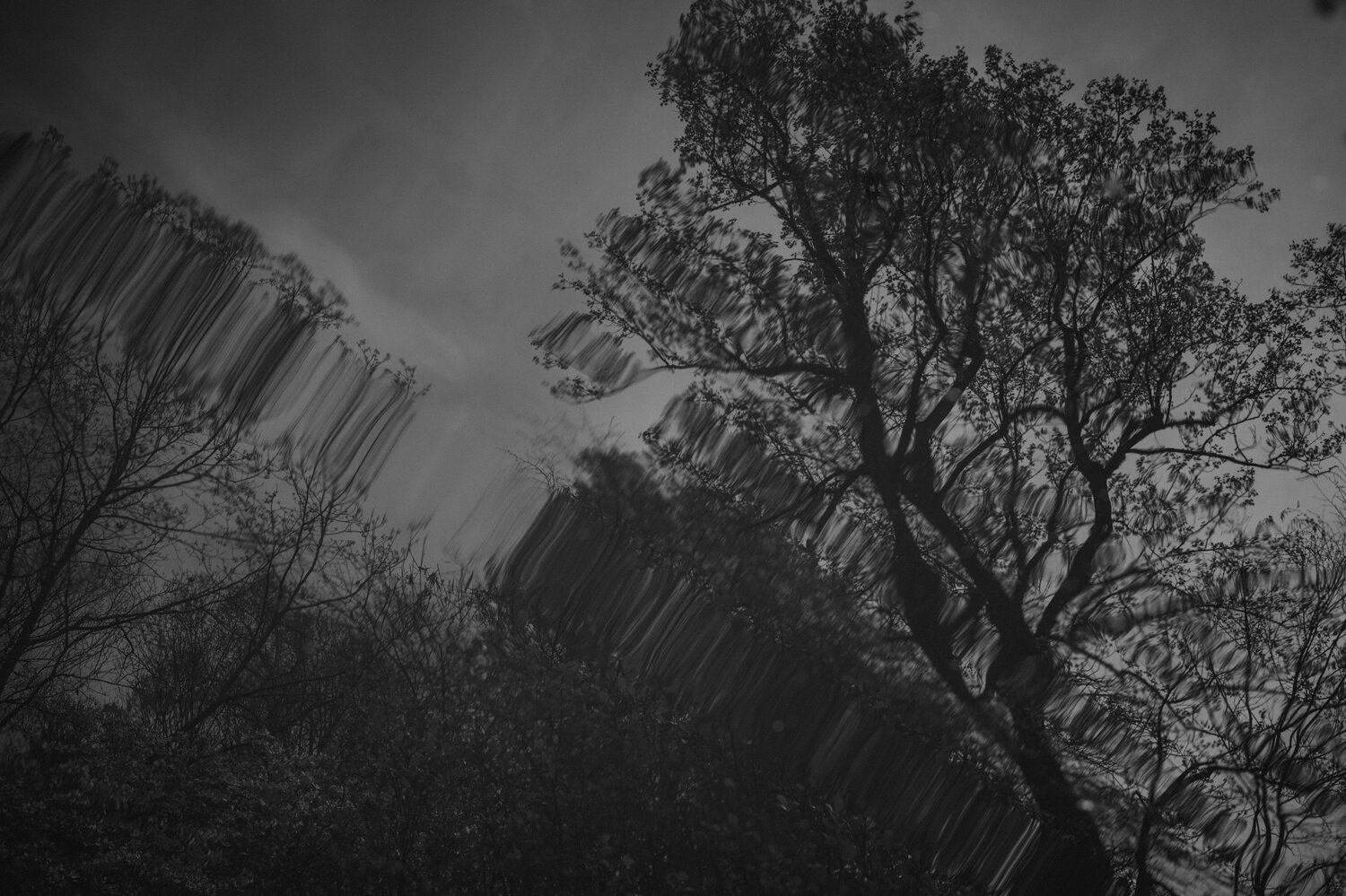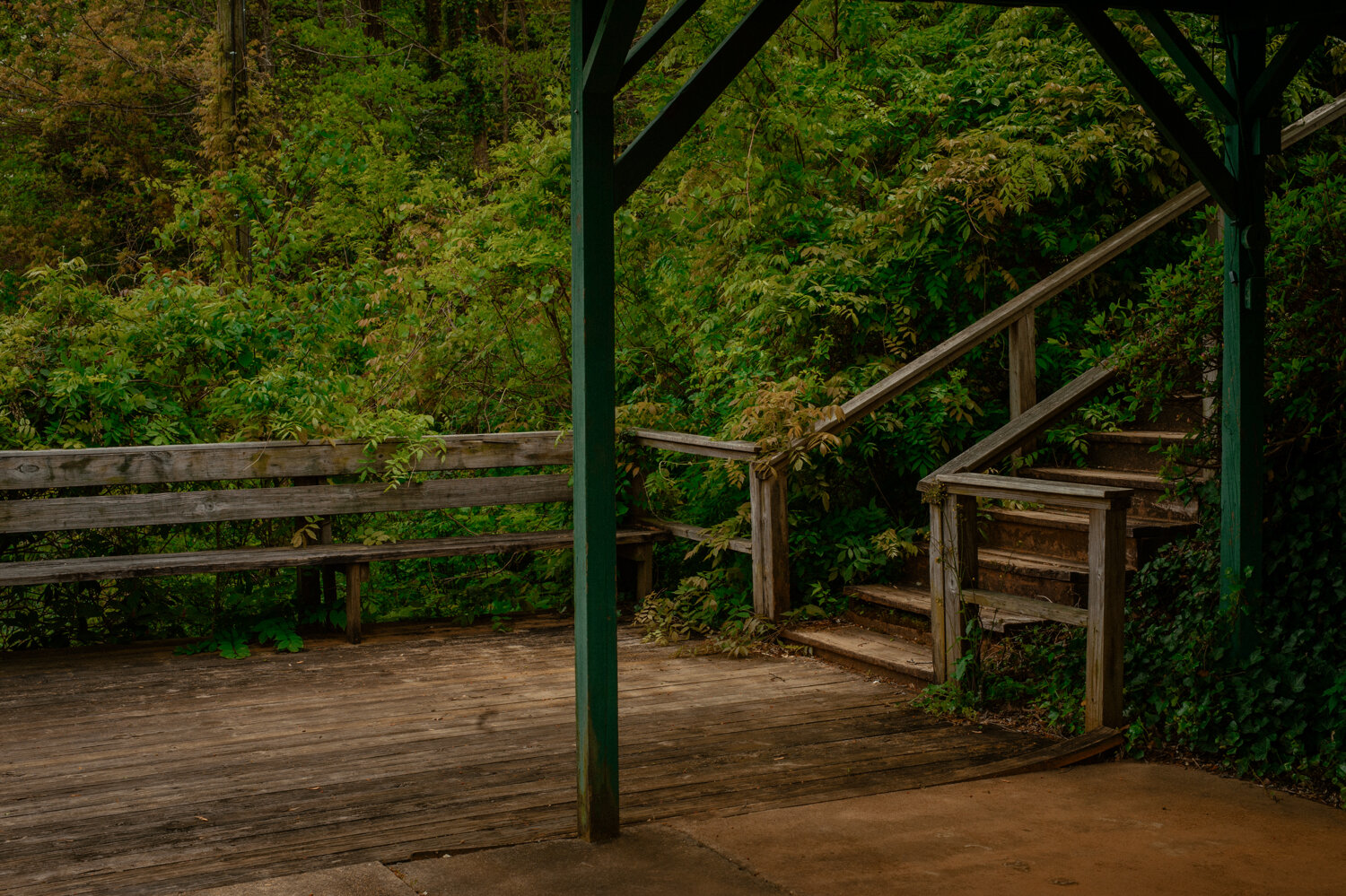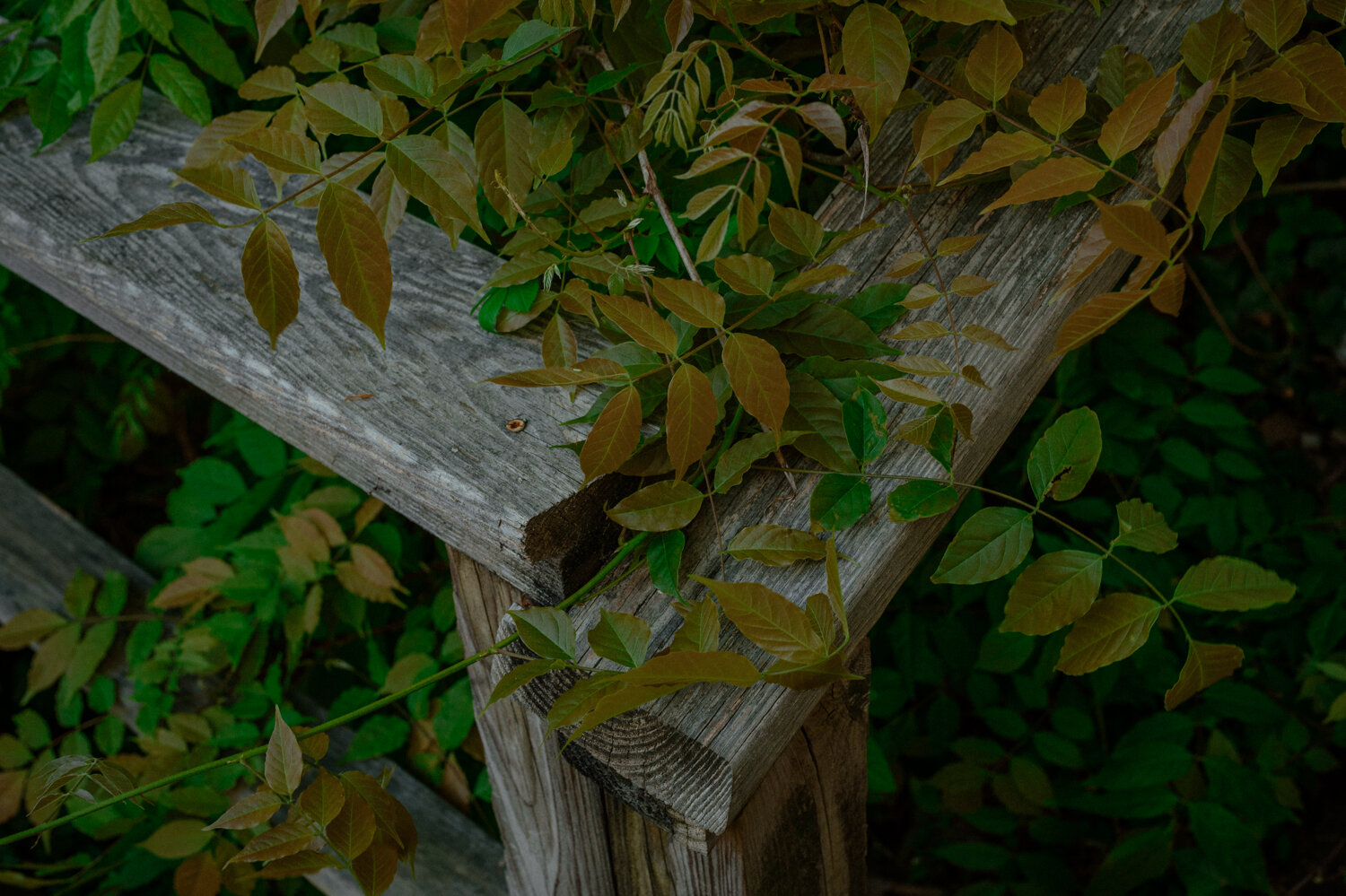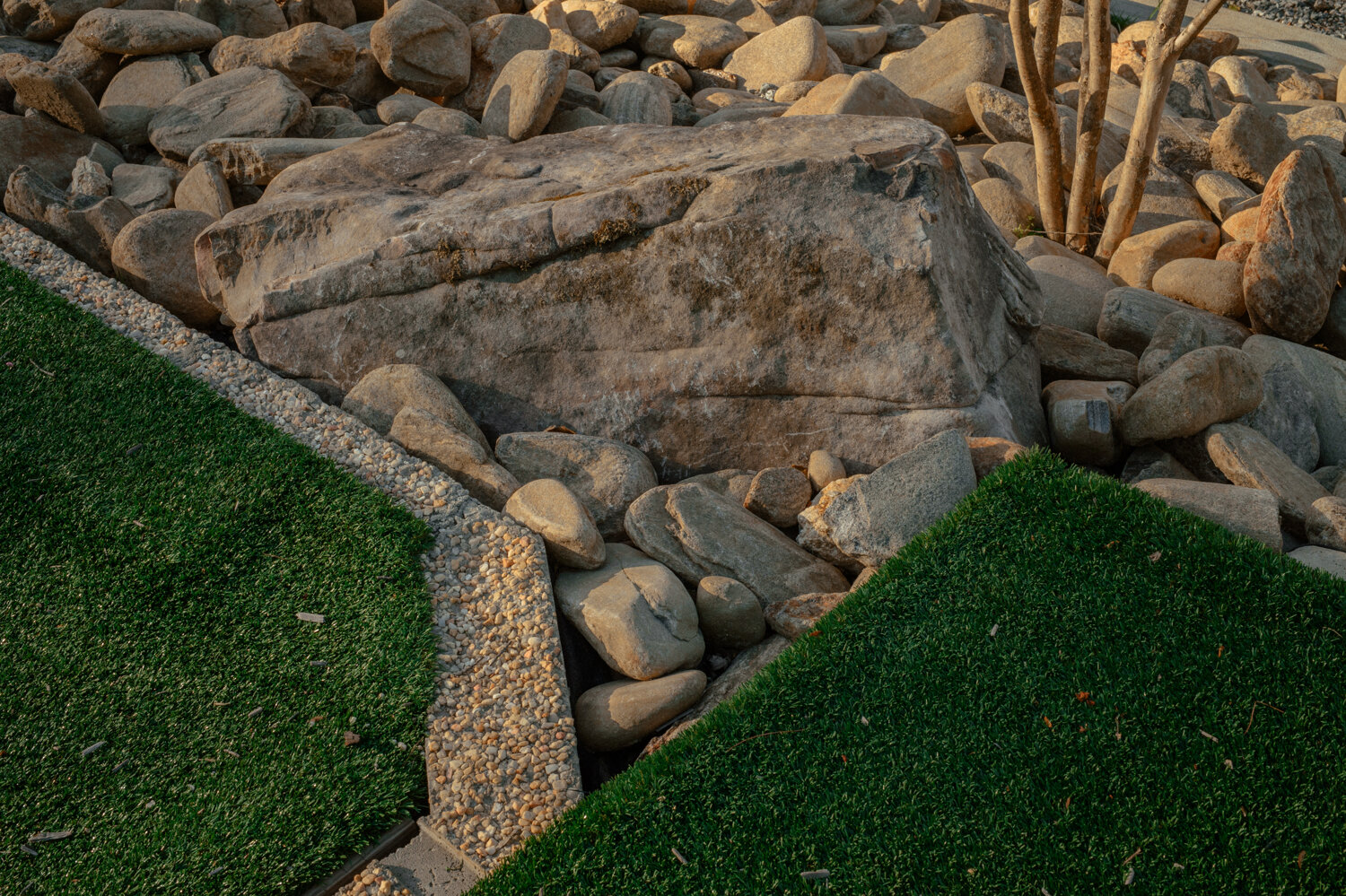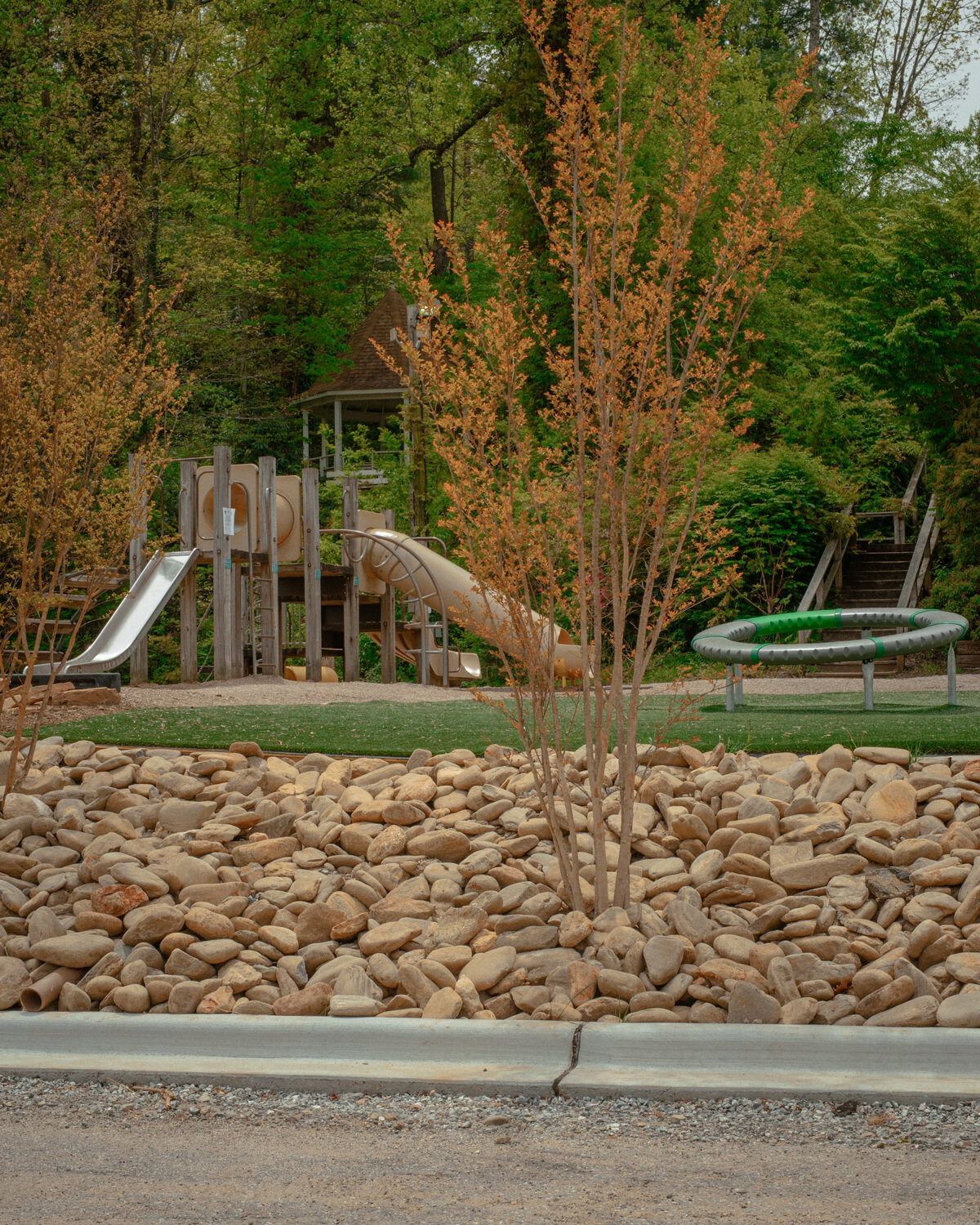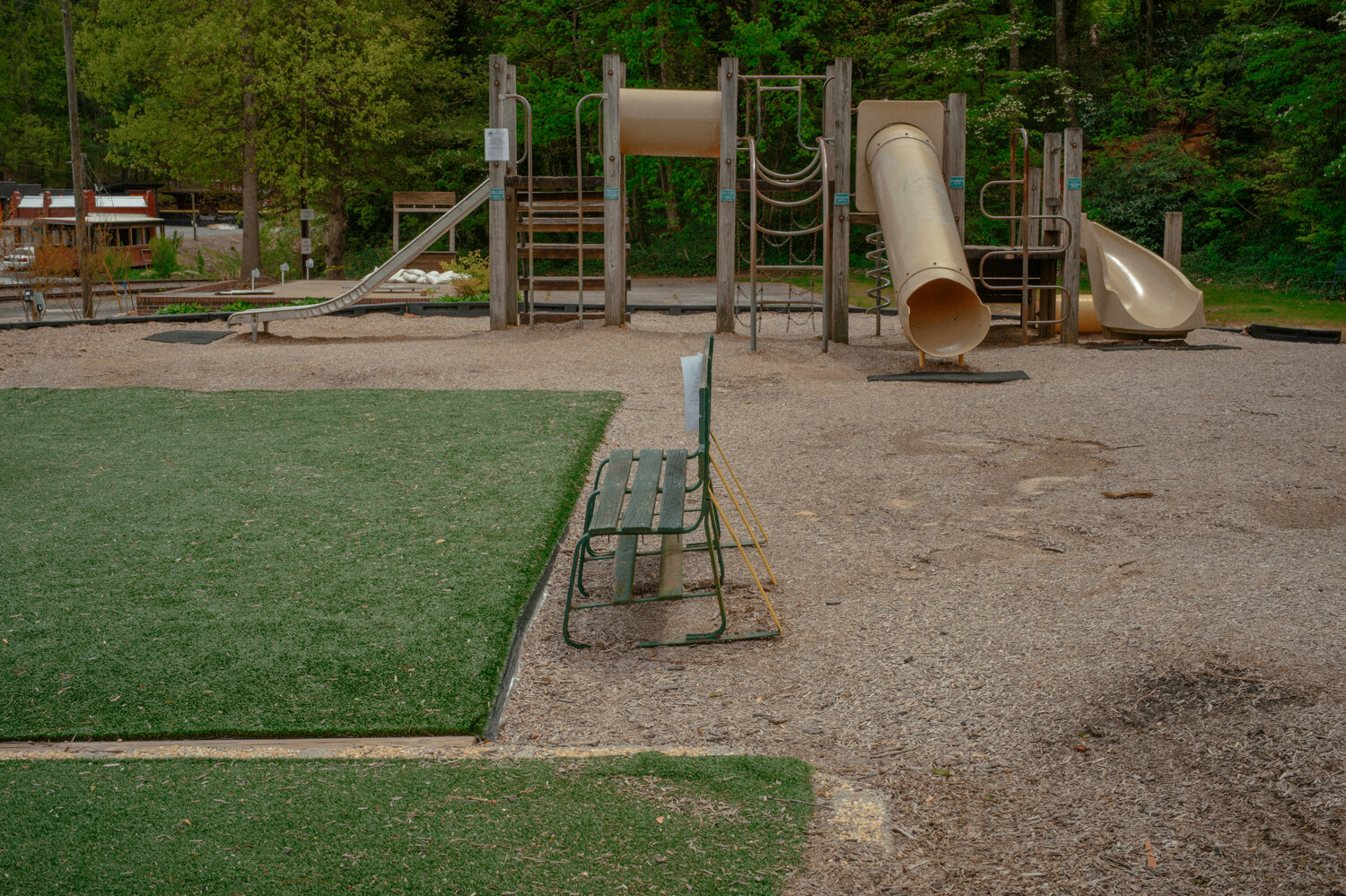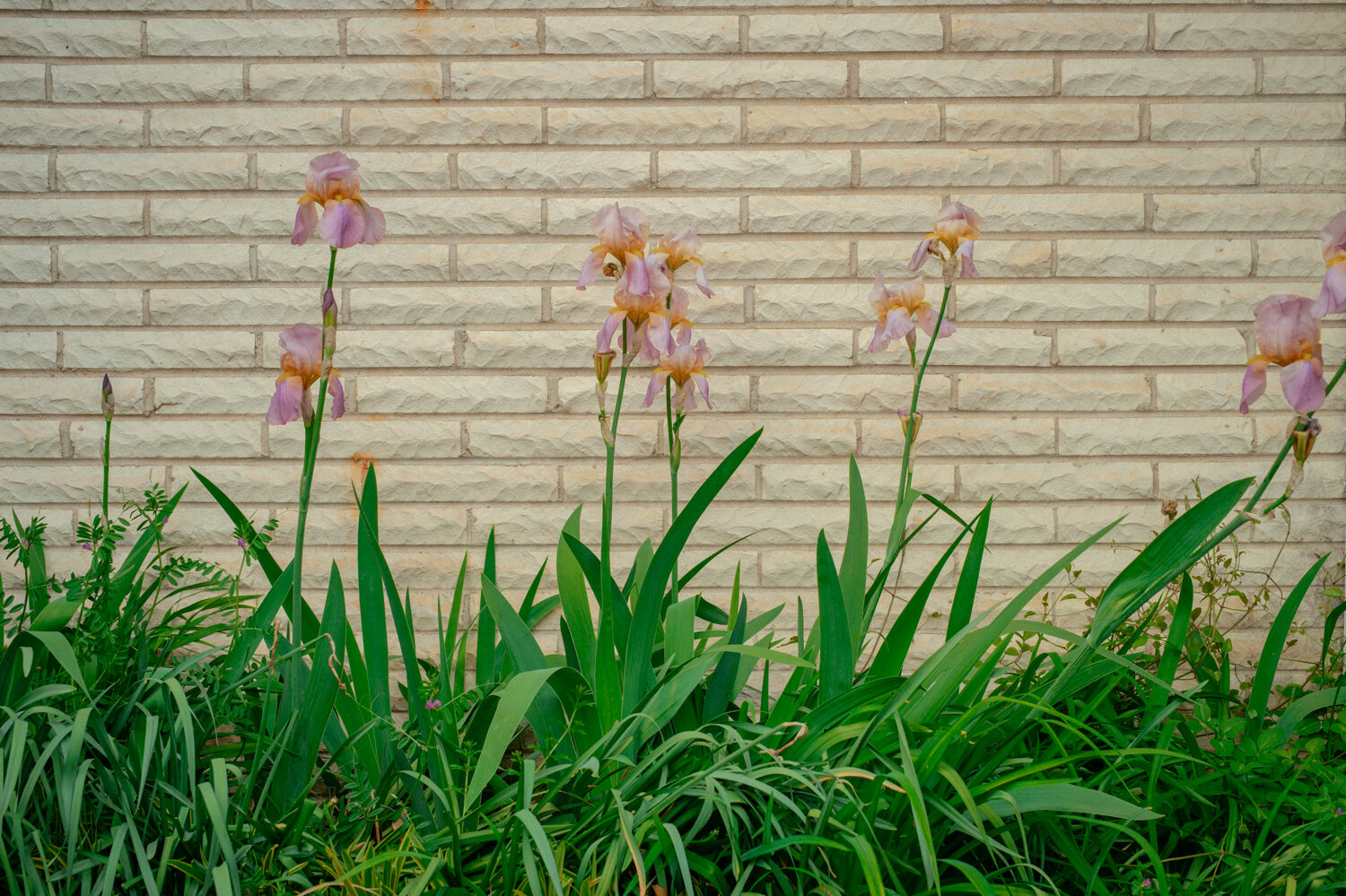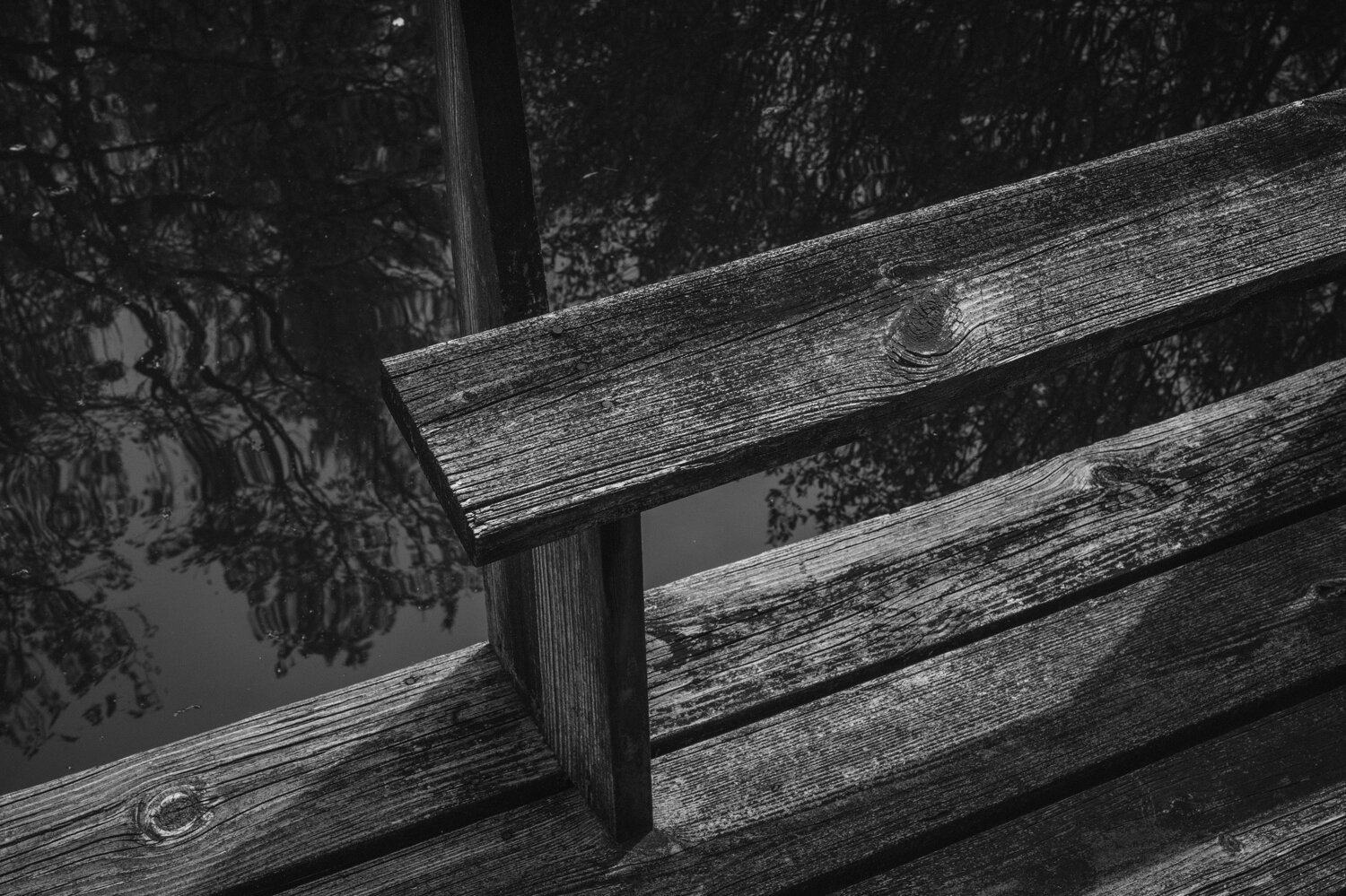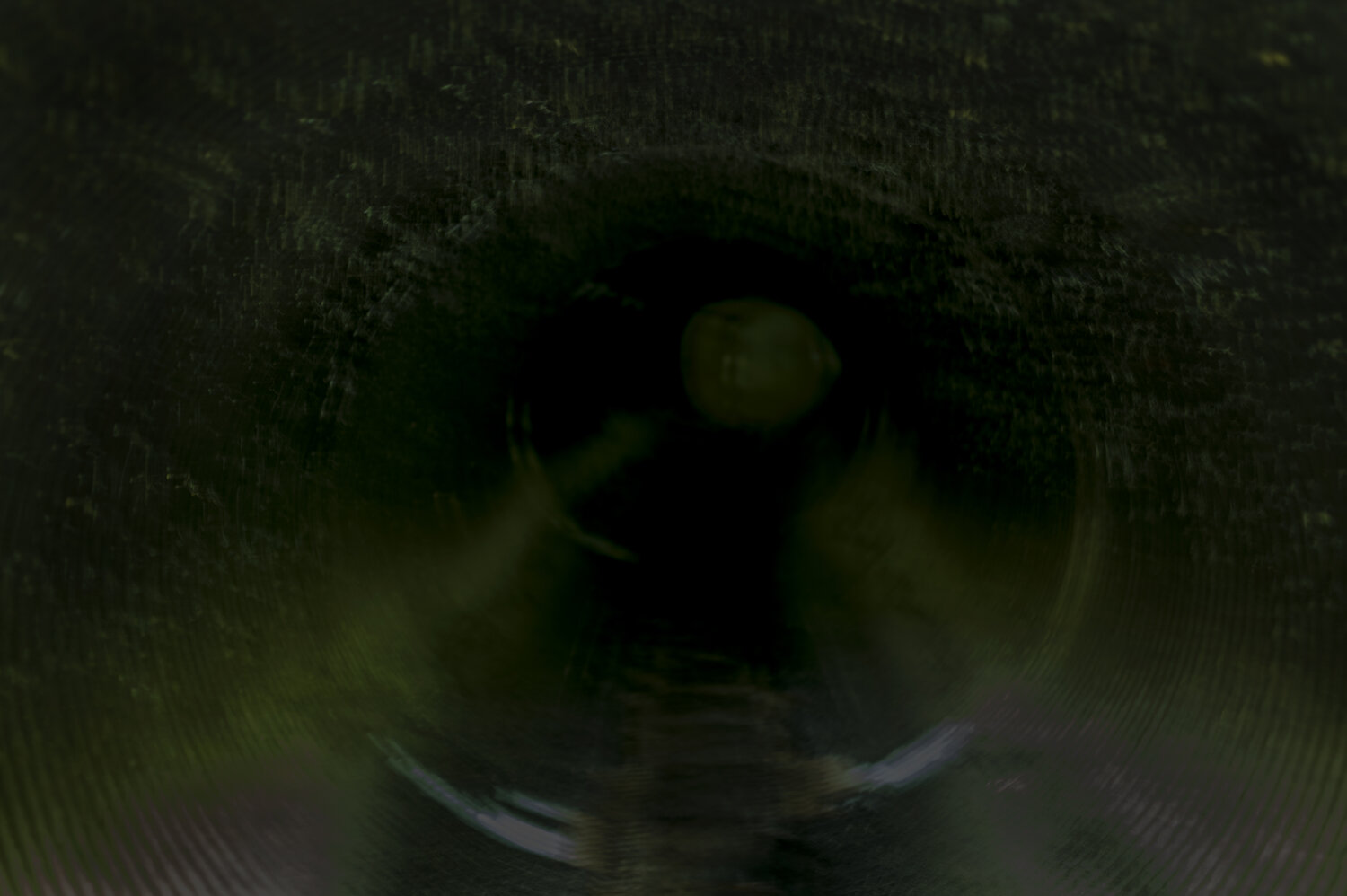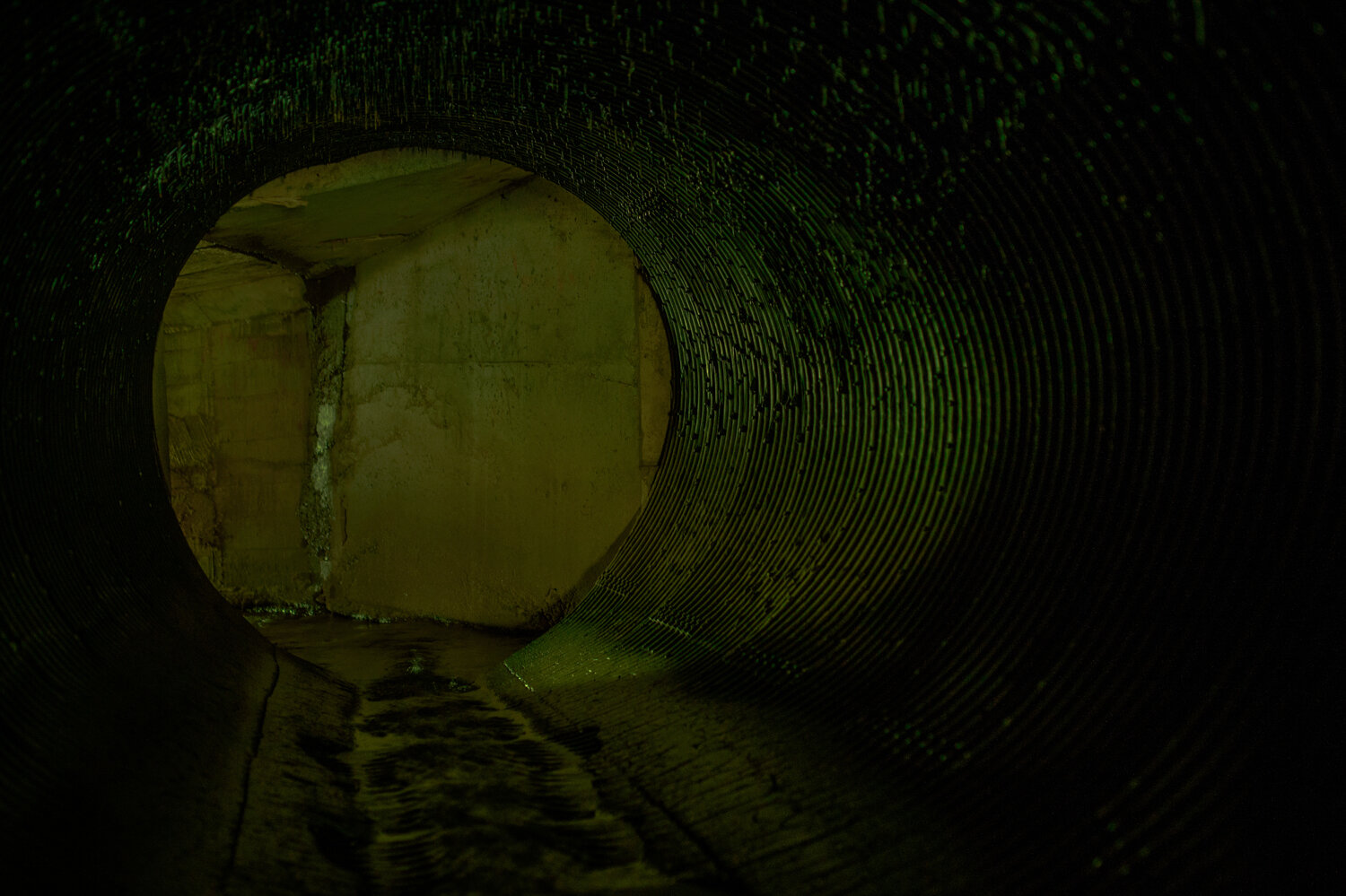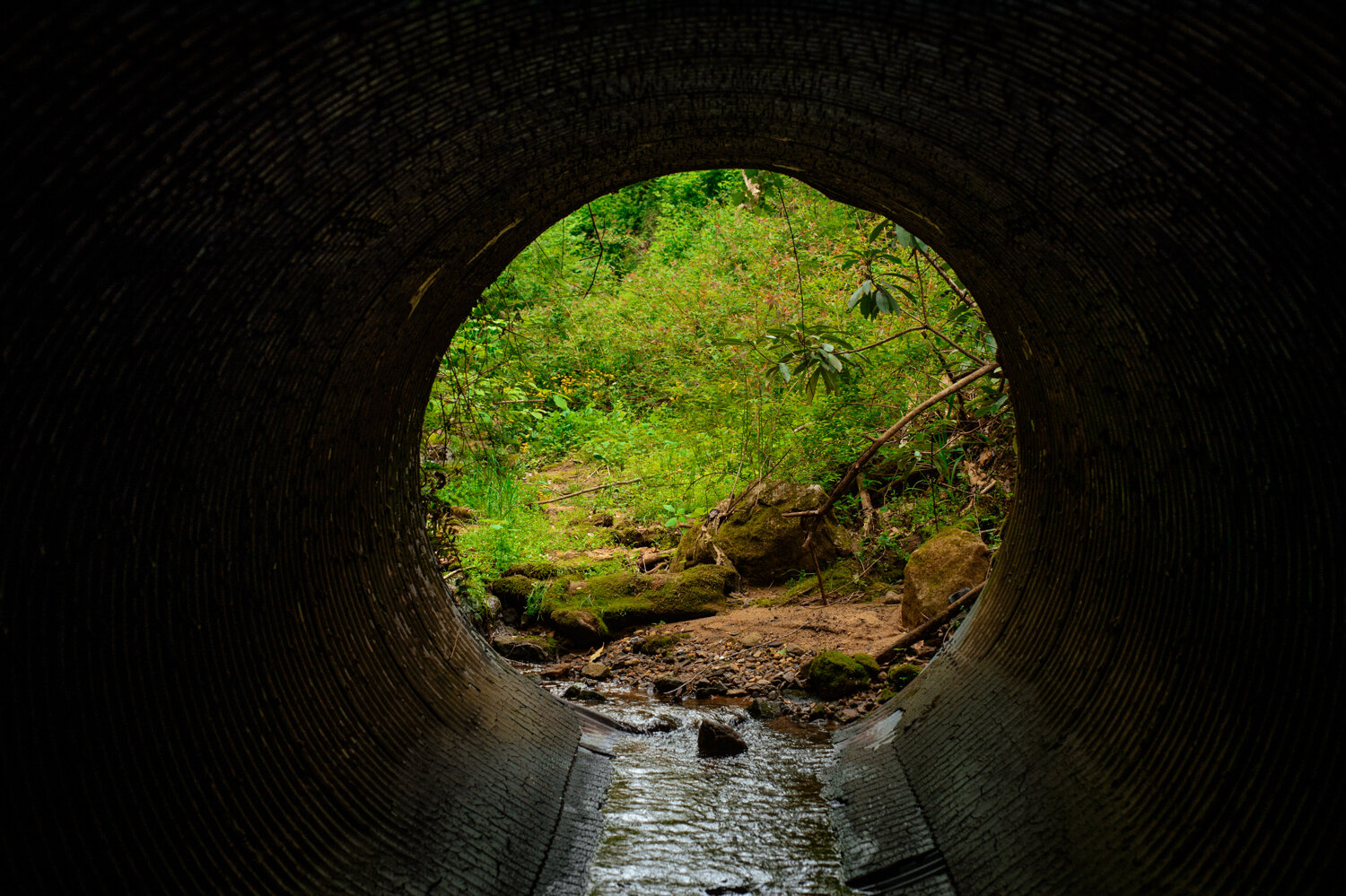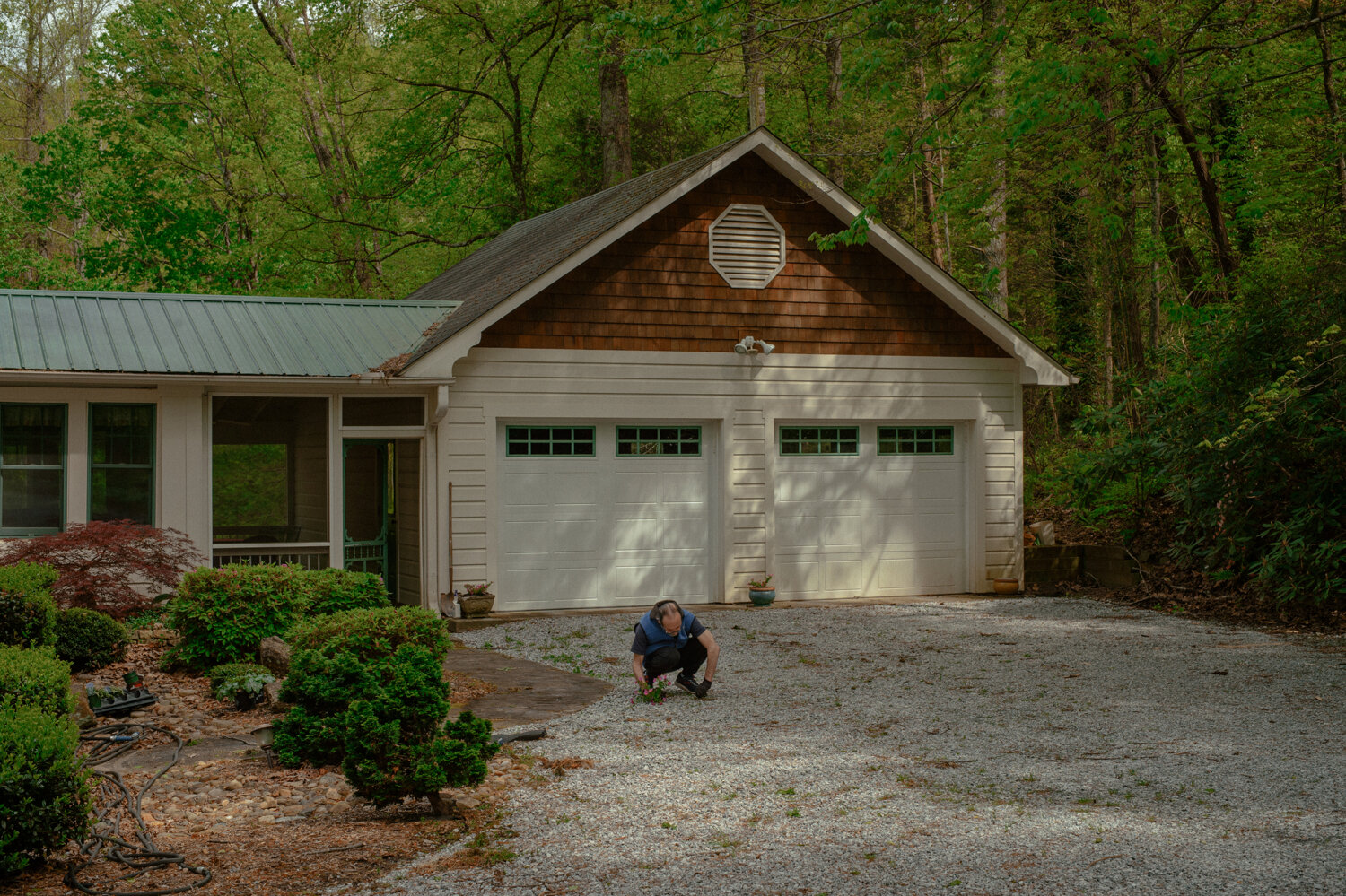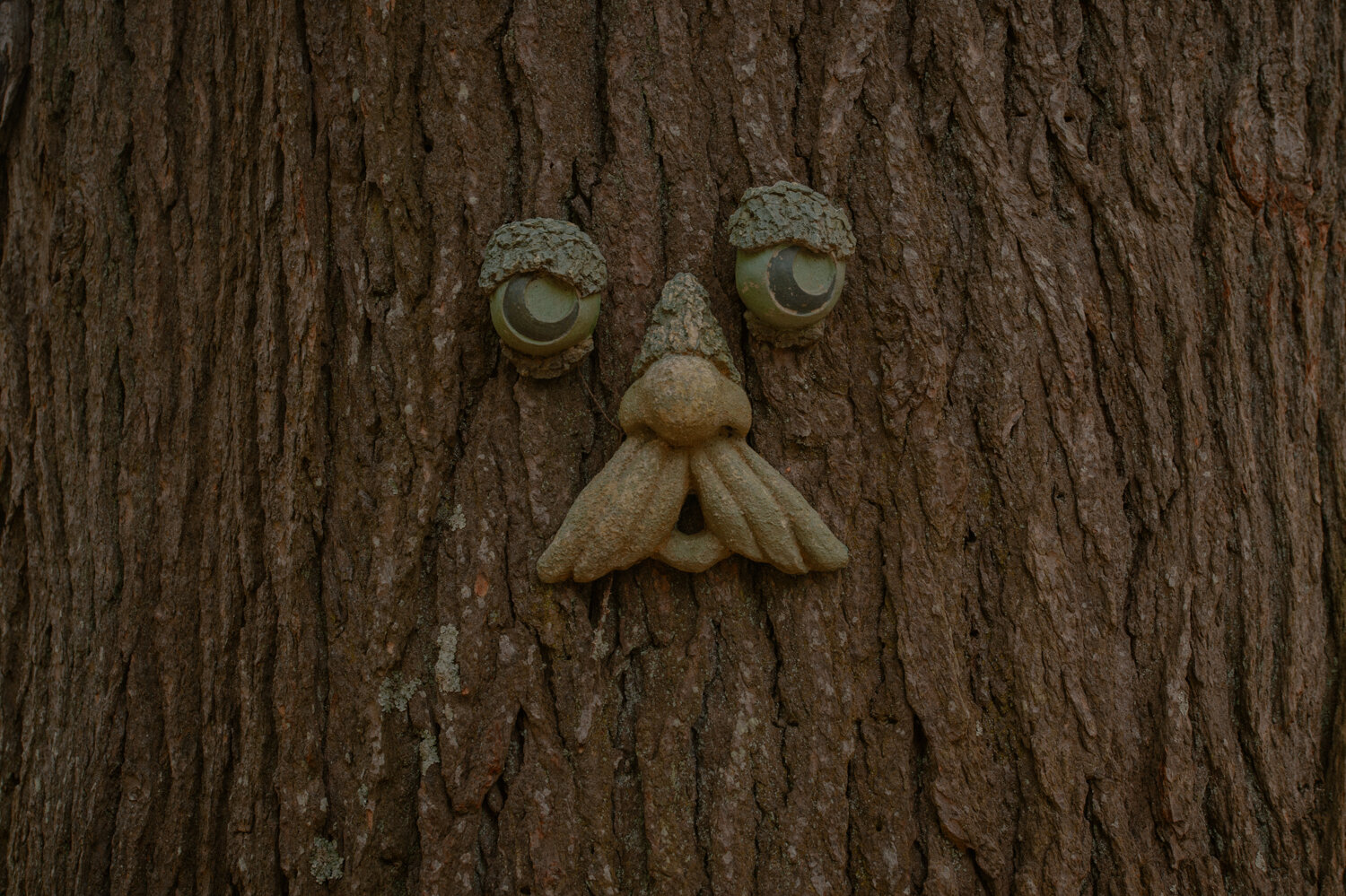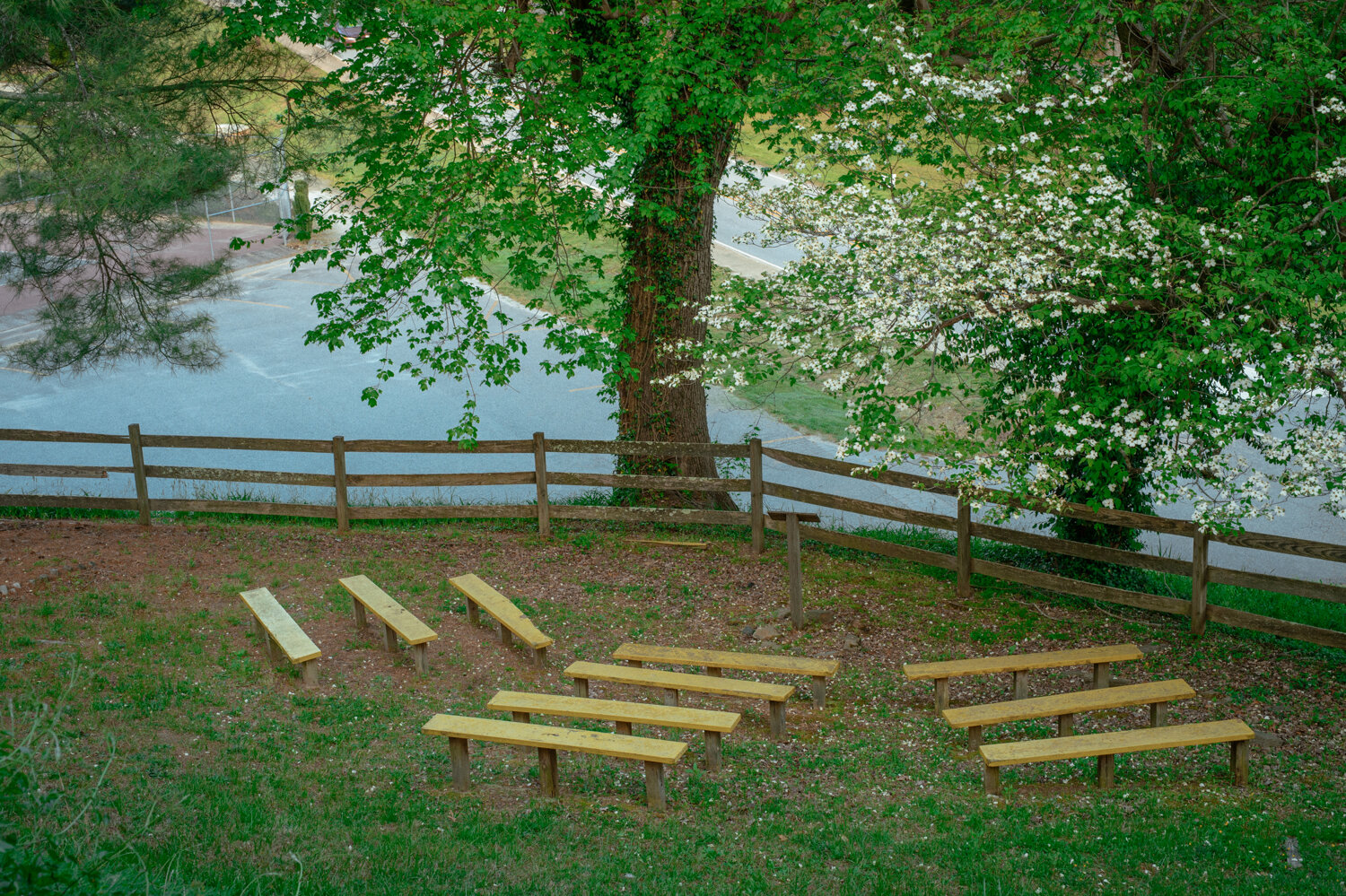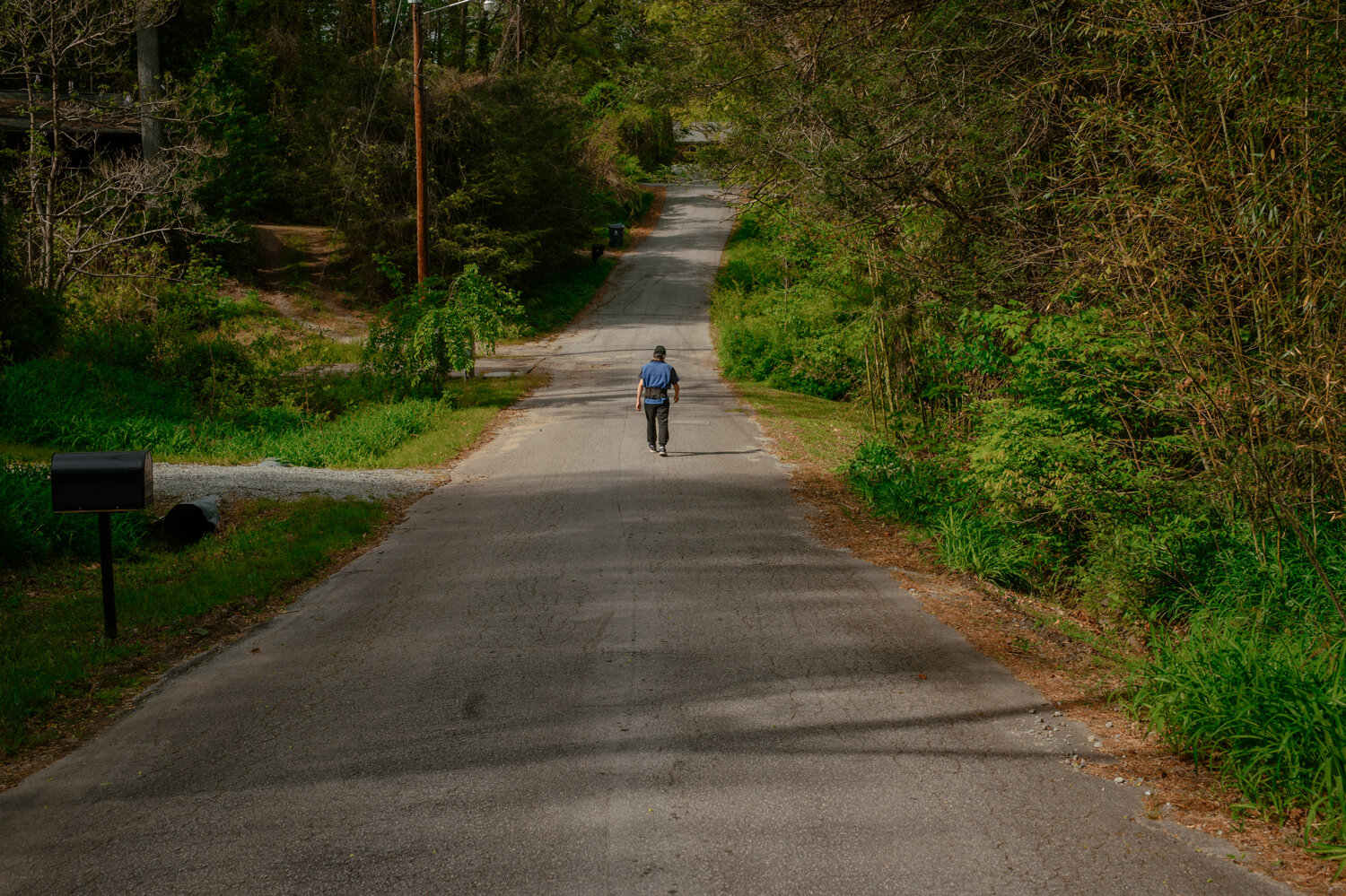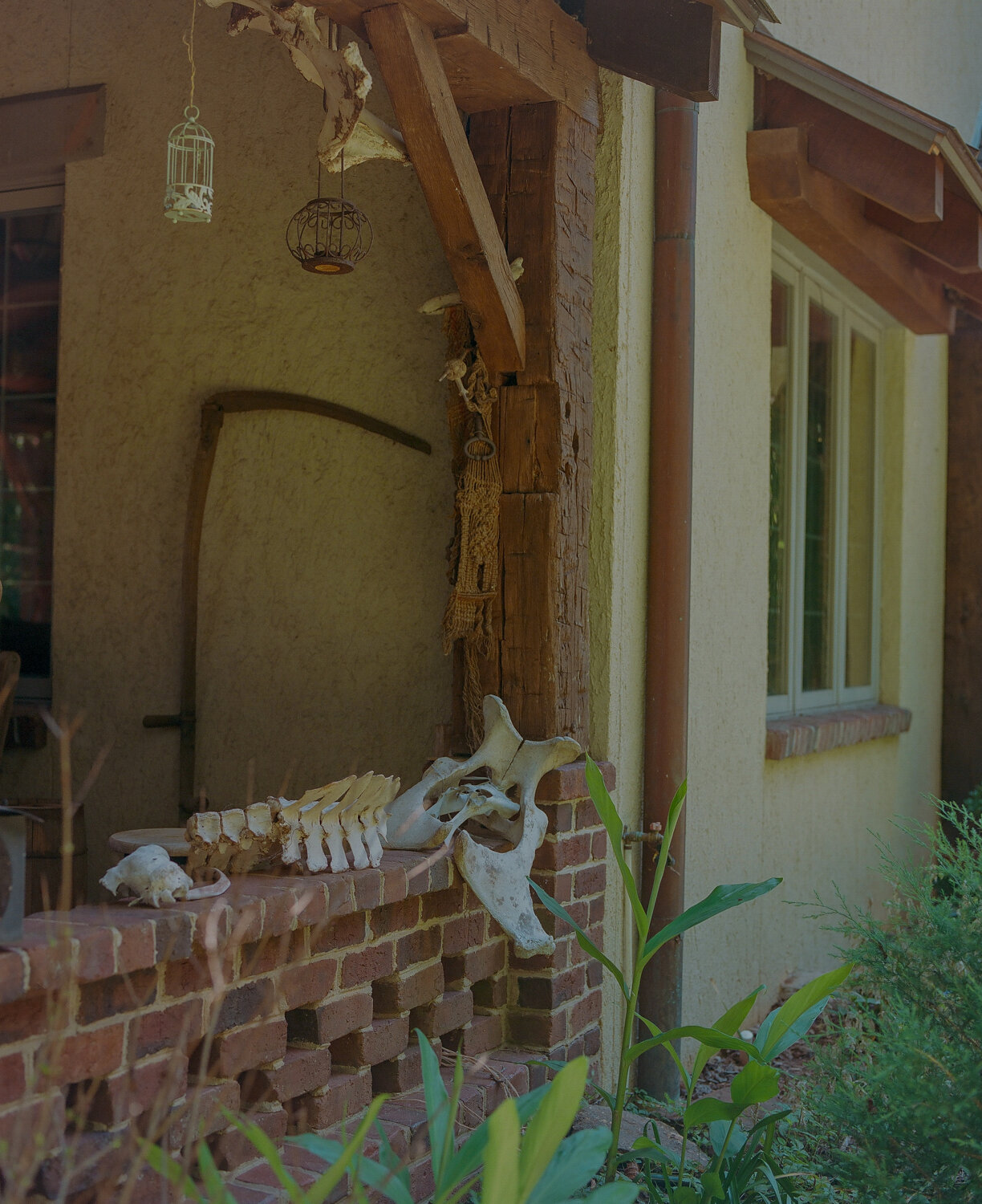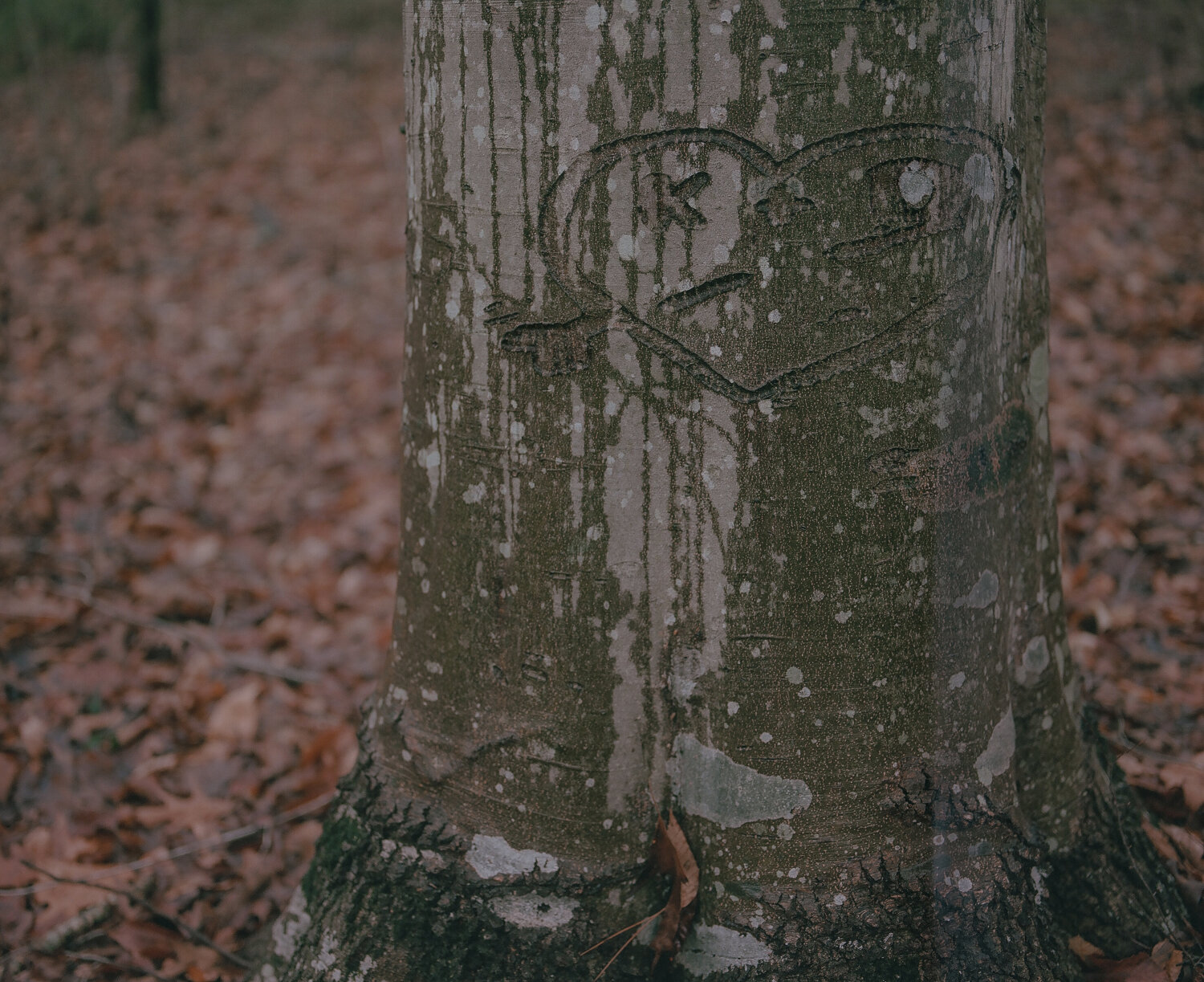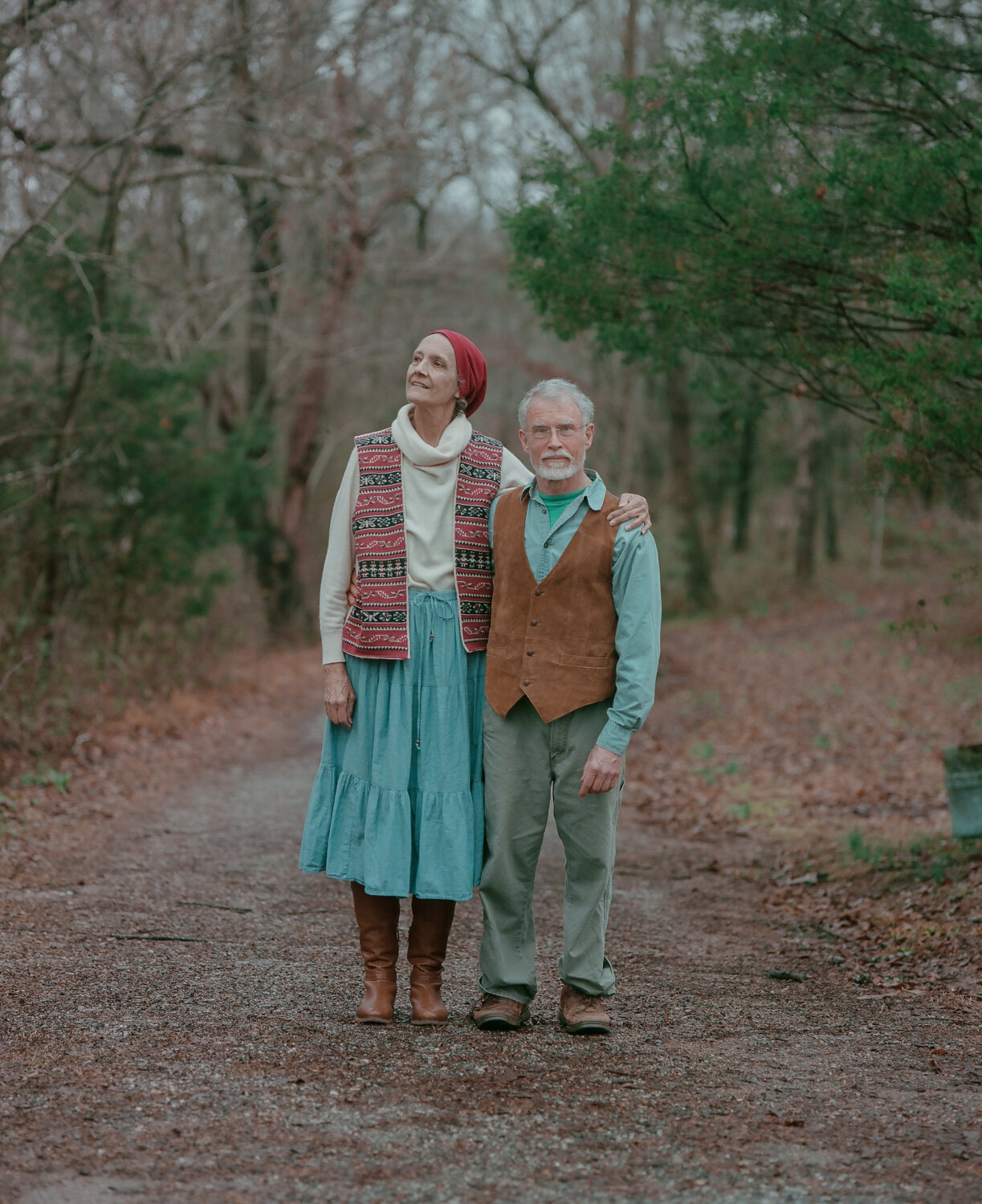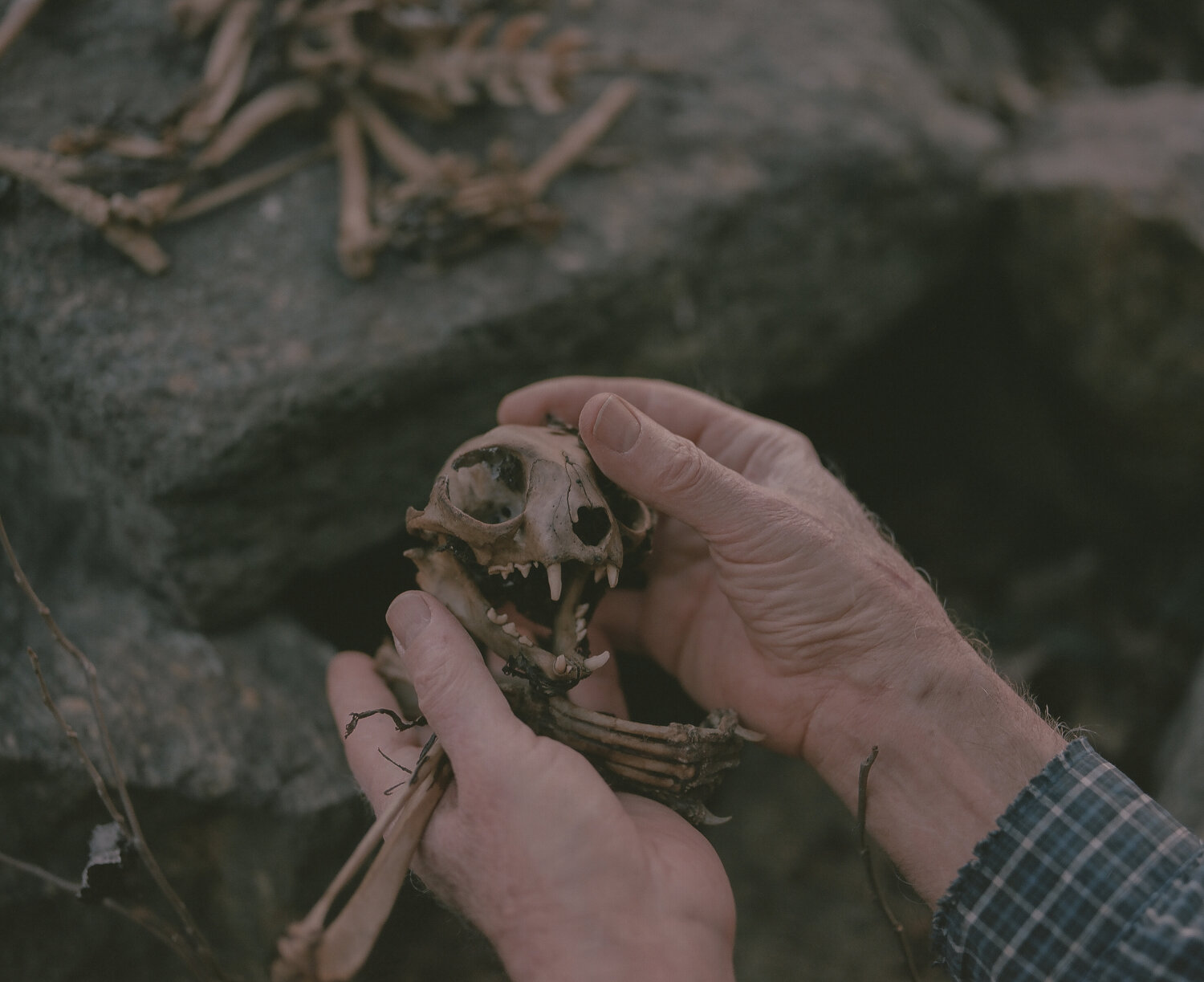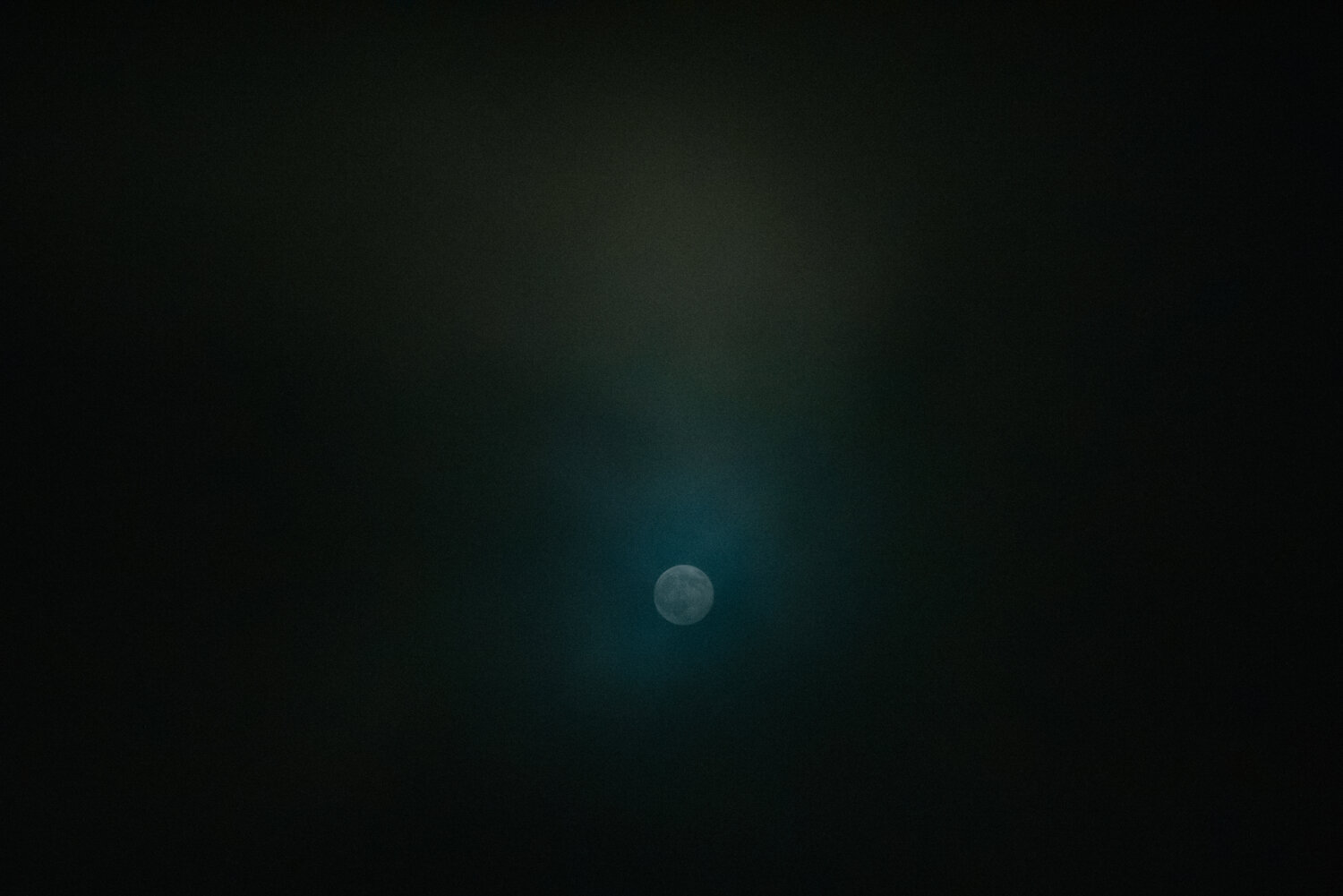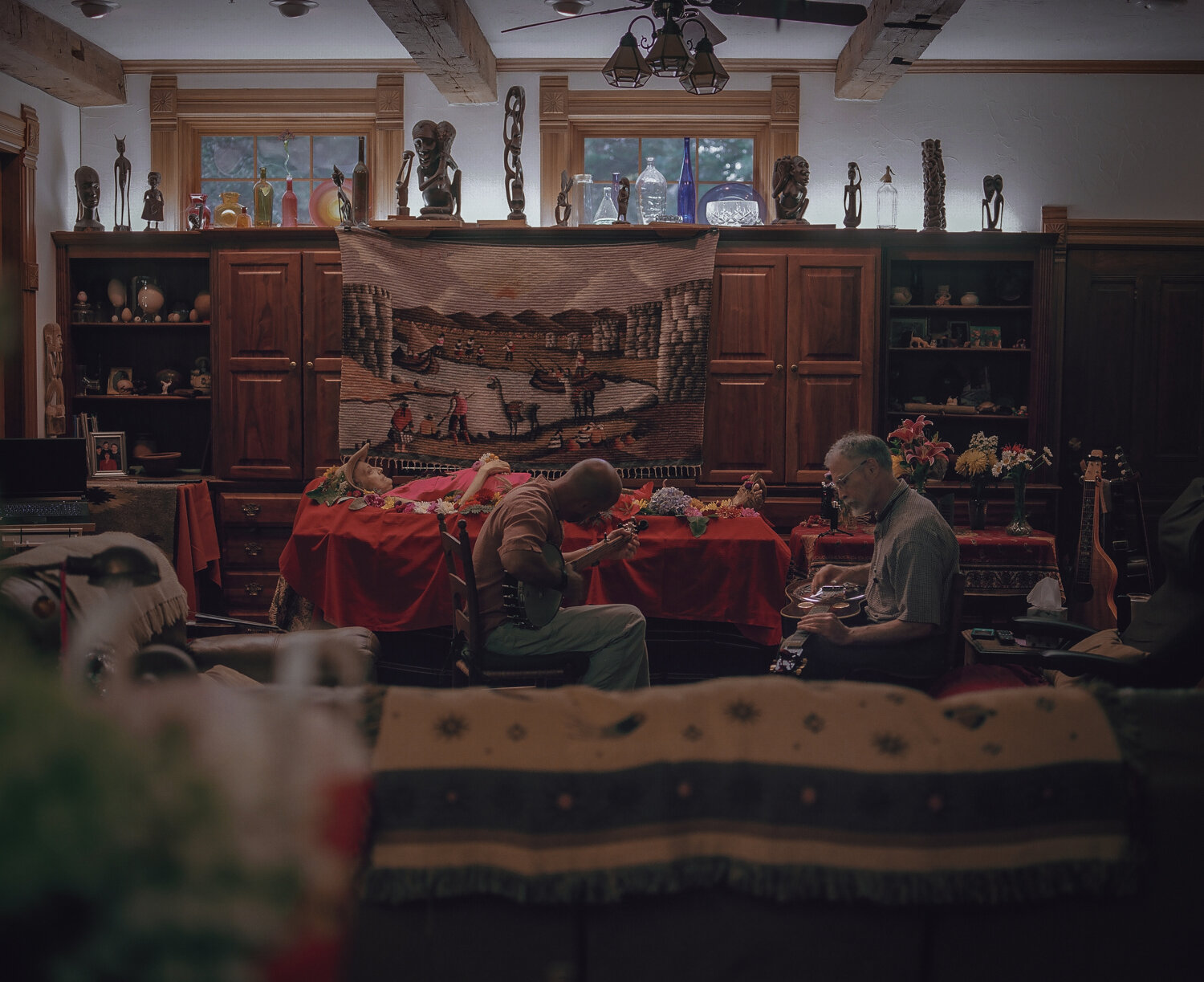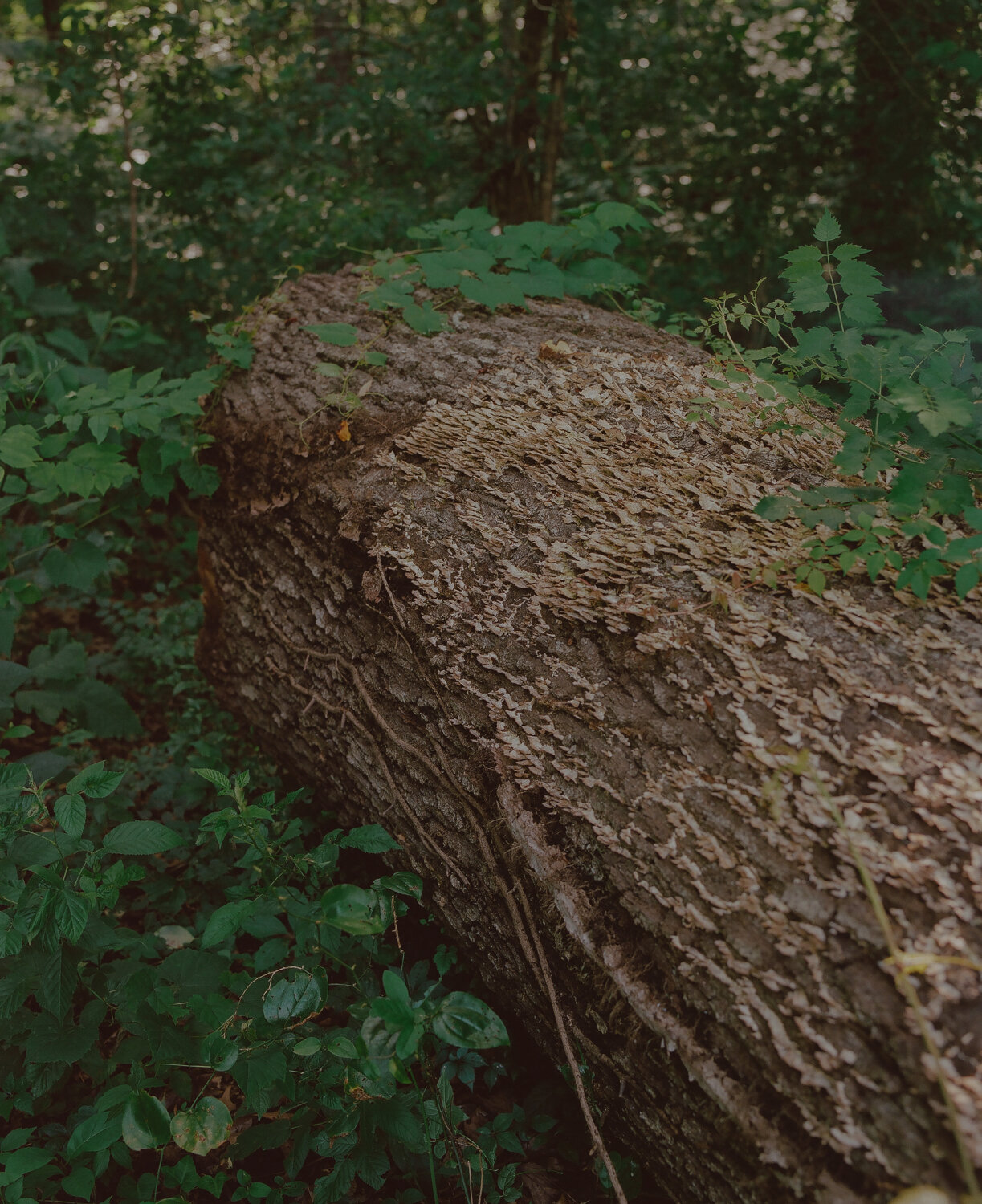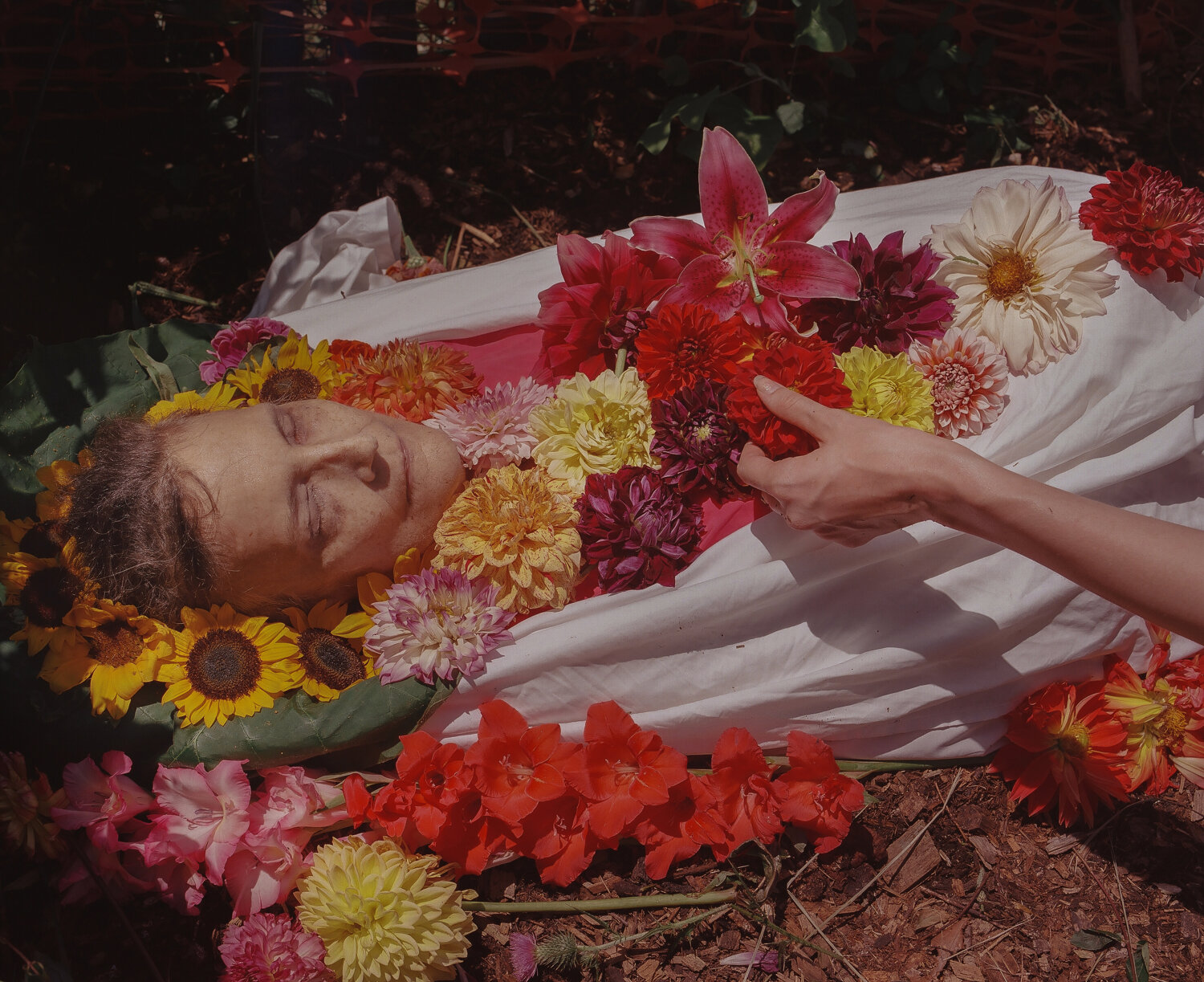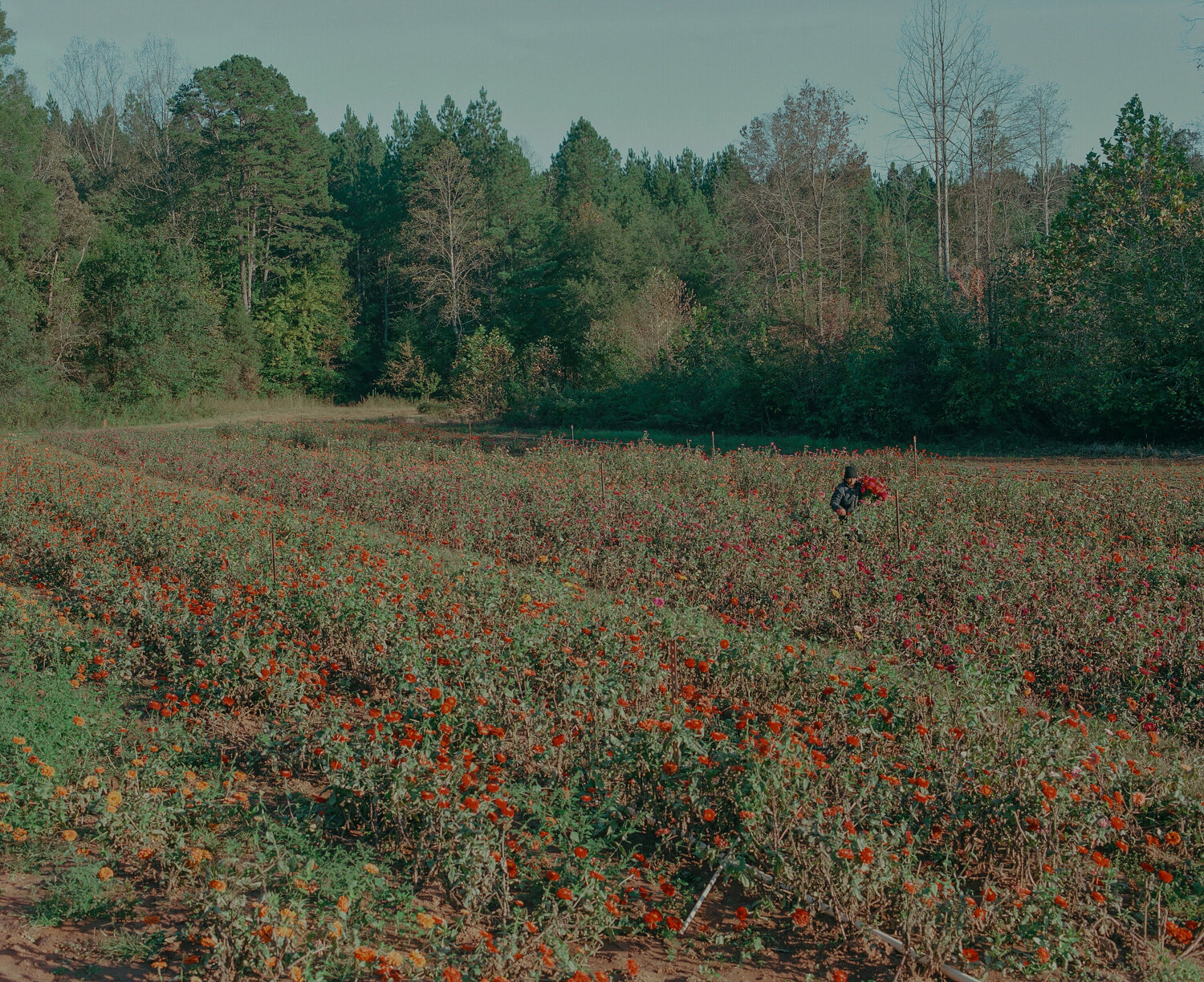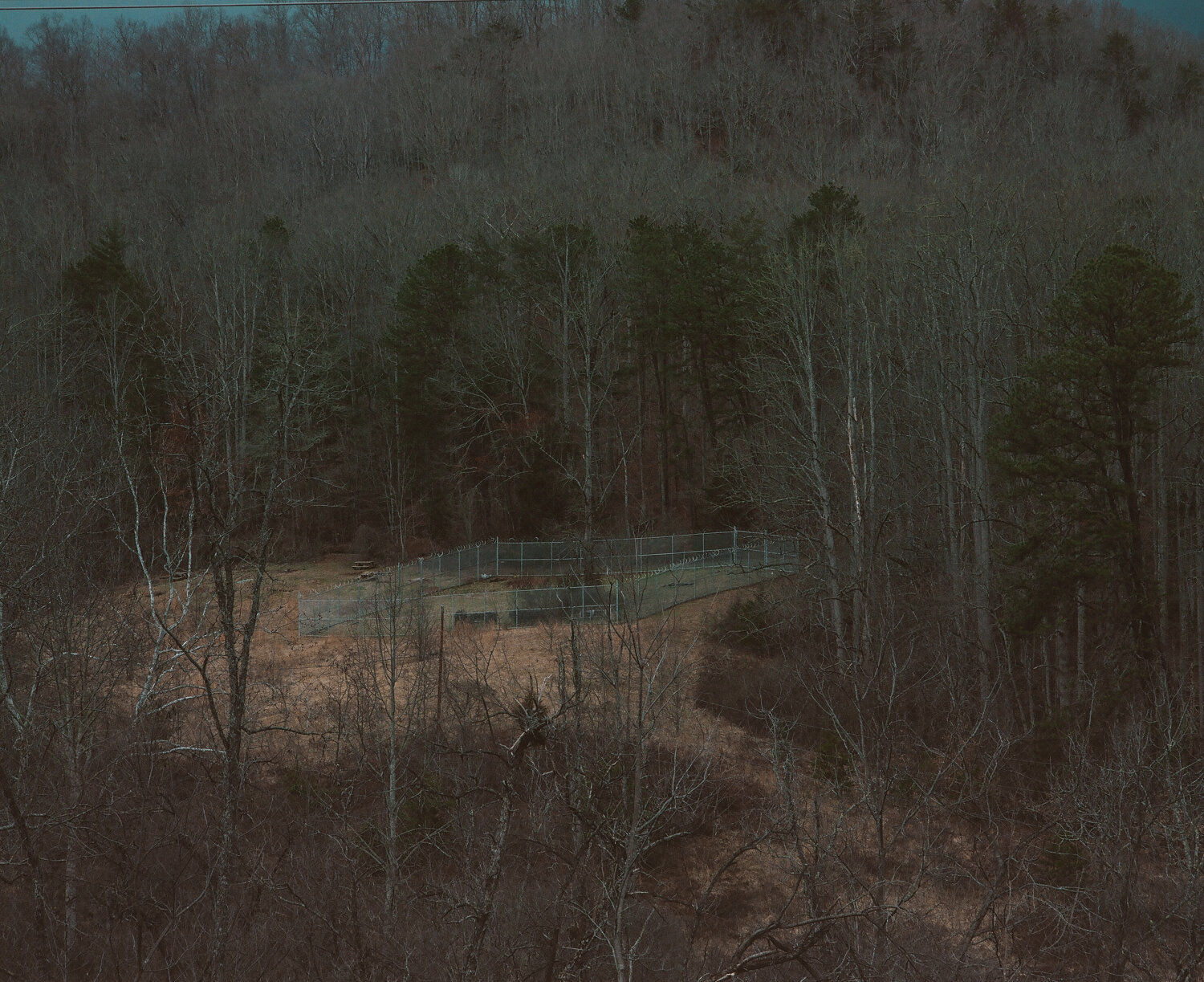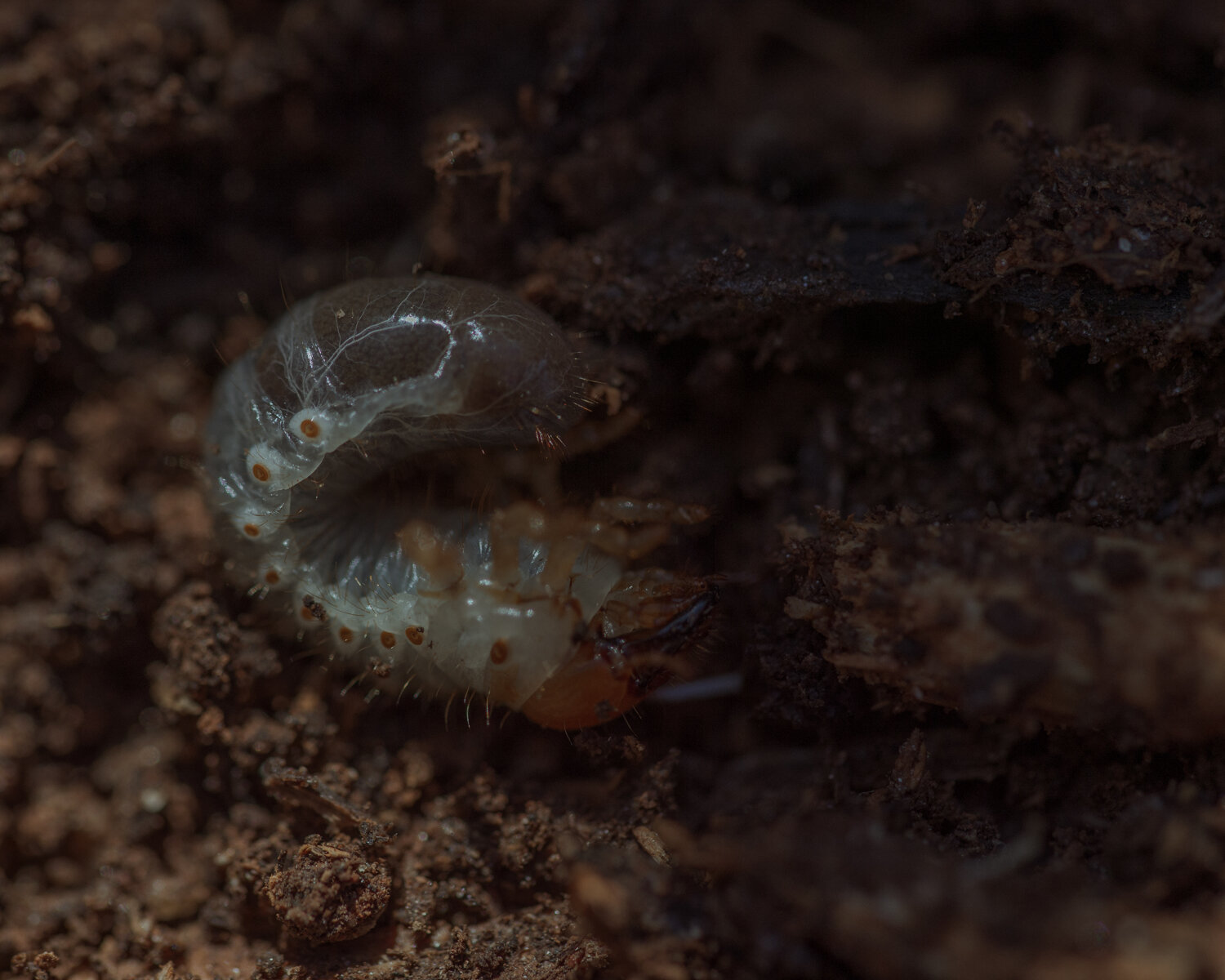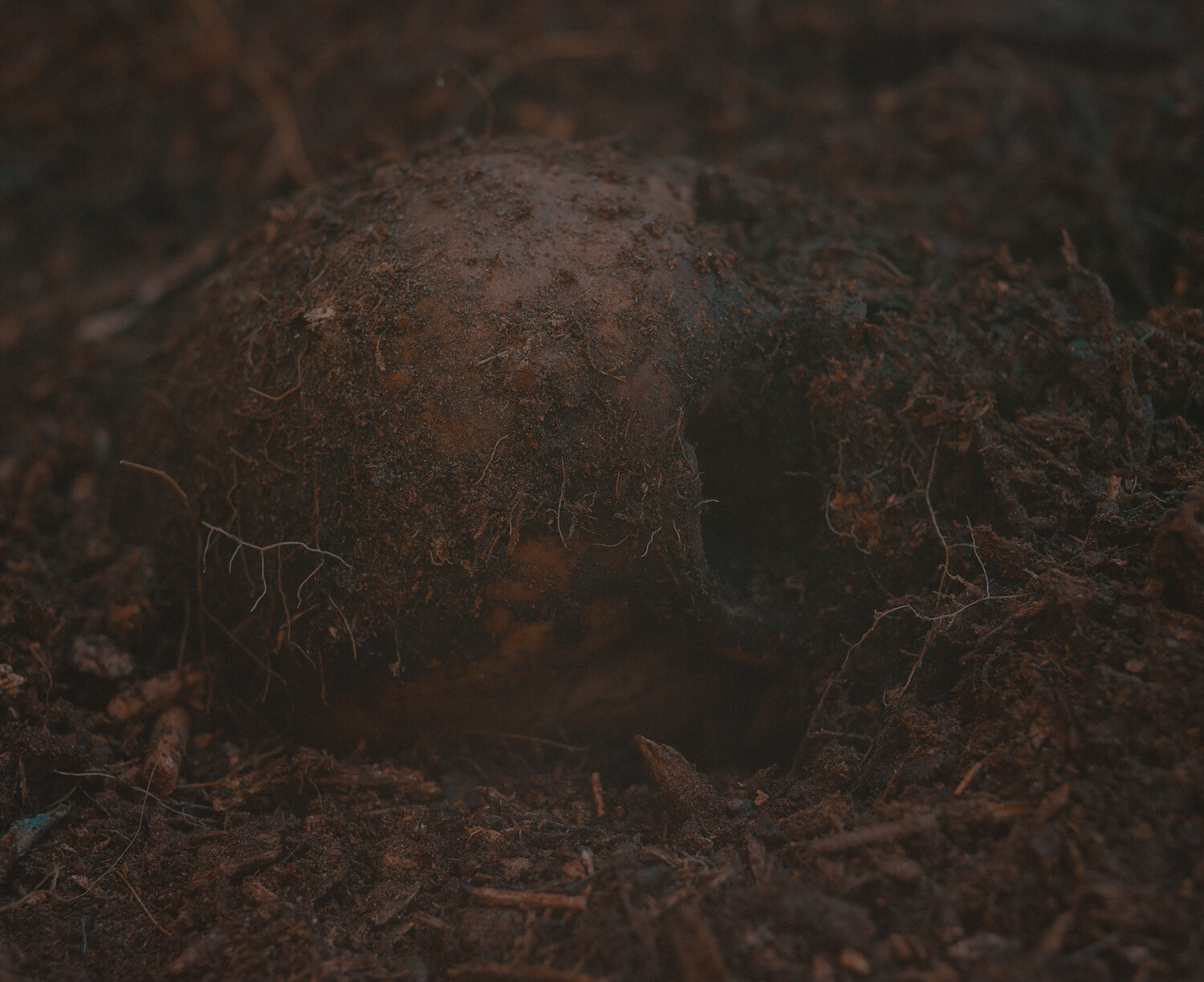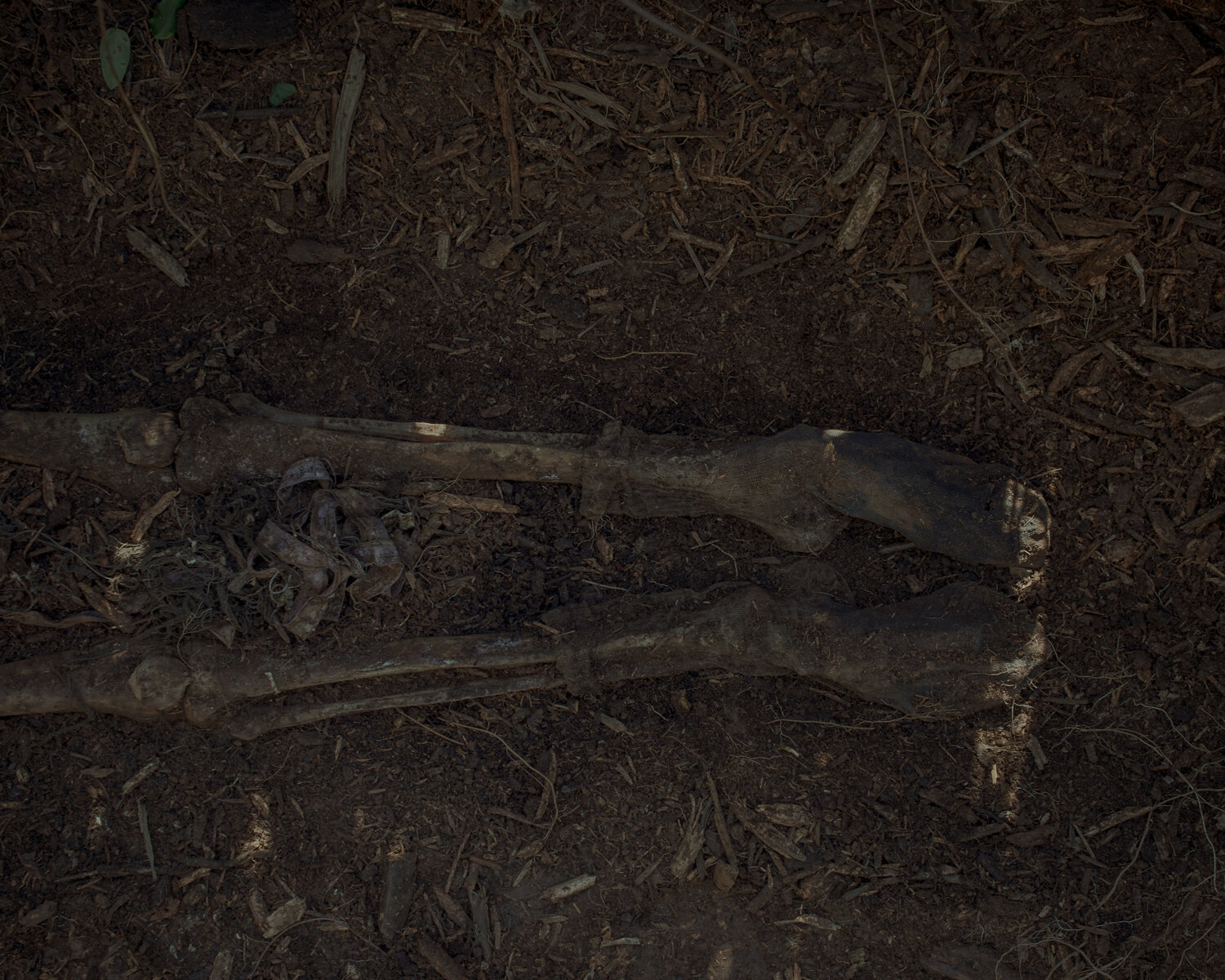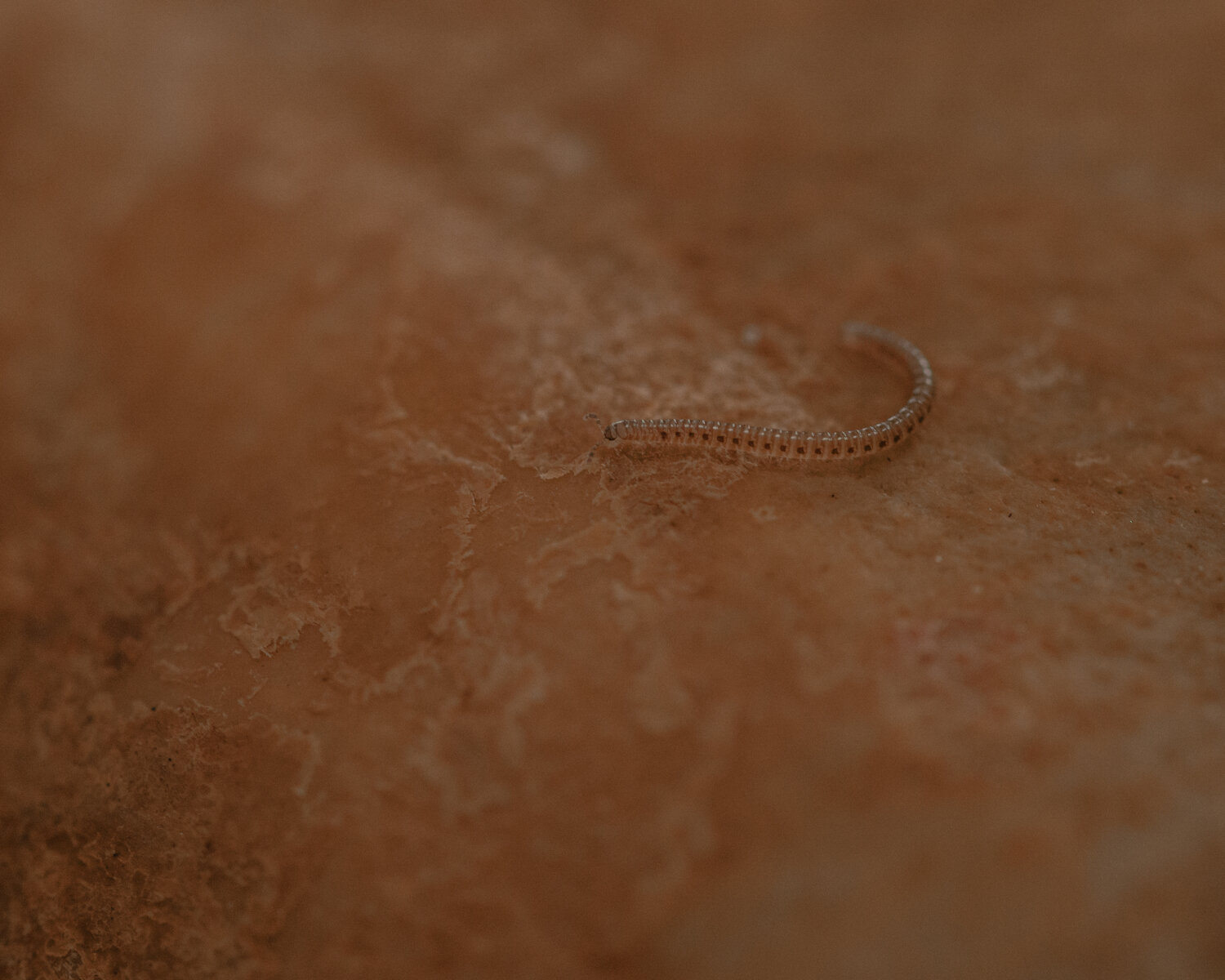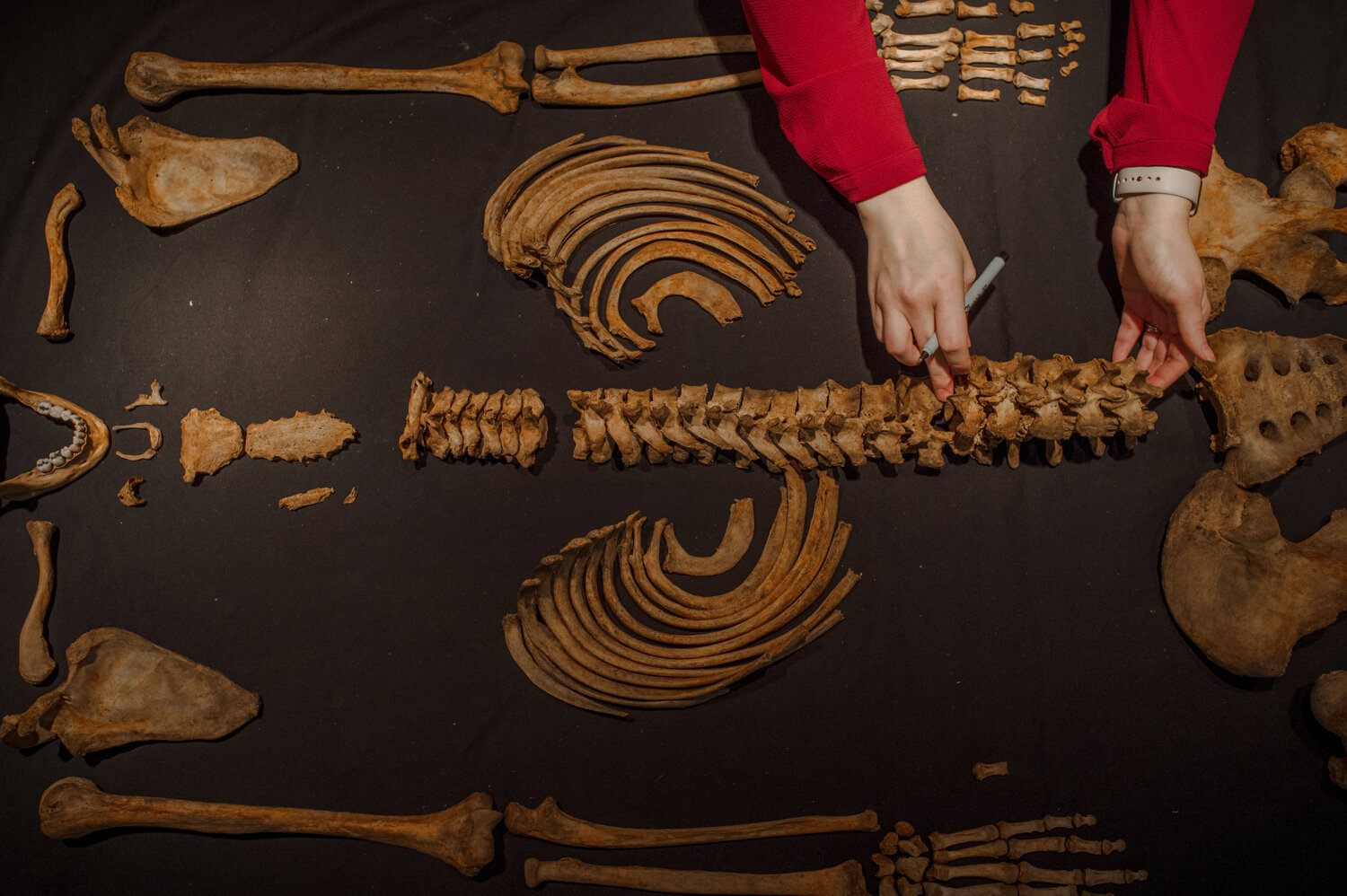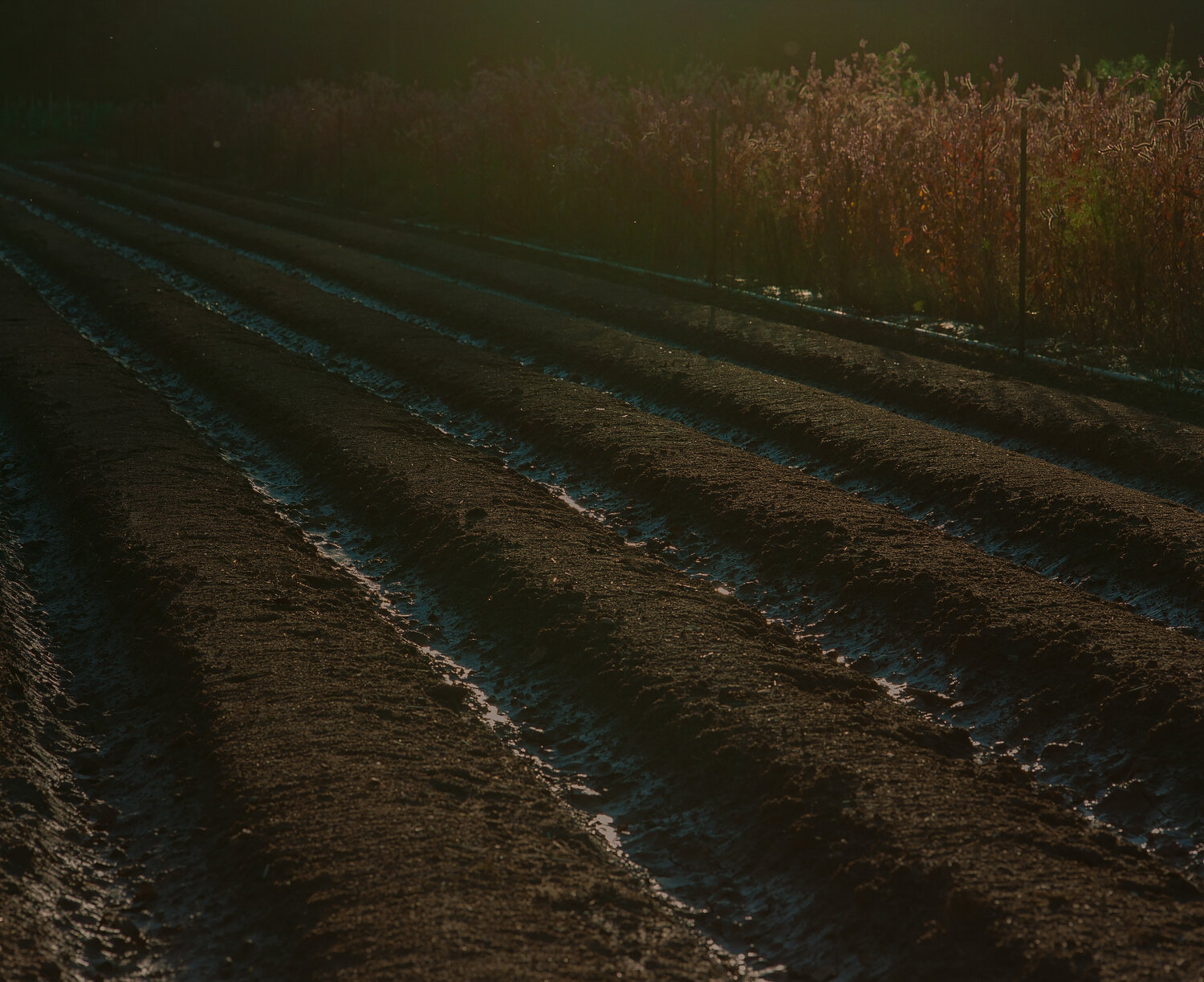Mike Belleme: Photographic Memory
It’s a common problem with photography, the medium fails to capture the elusive quality about the thing that makes it meaningful to us. Nowhere is this more clear than when trying to photograph one's own memories or places of significance in our lives. I had never really even attempted this, but recently I got an assignment from The New York Times in which photographers were given text from NYT readers about their daily Coronavirus walks to interpret visually. Six photographers from all over the country, each in the general region that the text was coming from, met the challenge in their own ways (check it out here). This is the text I was given:
“I see the footbridge over the train tracks and the freight trains that still carry goods to and fro. I try to wave at the conductor, as if I’m a child.
I see the park where I have played and walked for most of my life. I see the azaleas, camellias, daffodils, honeysuckle, and other flowering plants that have been there for what feels like forever.
I see the gravel paths and the stone bridges over the small creek, where I used to imagine trolls lived like in the Three Billy Goats Gruff. I still go trip-trapping over those bridges in this space that reminds me that I’ve been around for a good, long time, and that there are some things that survive, and that those things can be counted on to bring peace.”
The first things that came to mind were all visual cliches dealing with memory or literal descriptive things mentioned like the flowers and footpaths, but I didn’t want to get too caught up with the things described -- I was more interested in the sentiment. Fortunately for me my home town of Saluda, where my parents still live, is only a 45 minute drive away. I go back to Saluda somewhat regularly to visit my parents, but haven’t spent any time in recent years walking around town intentionally interacting with the spaces that I did as a kid.
I was a free range kid. I don’t even know if those exist anymore, but in the time and place where I grew up it was not unusual for my friends and me to spend all day every day just exploring either in the woods or around town. None of our parents had more than a very vague sense of where we were at any given time. If I can point to one thing that has shaped my development as a person, I think that freedom to roam and explore my curiosity as a kid would be right at the top of the list.
These places, which I hadn’t returned to in my adult life, took on a new meaning upon revisiting. They were taken for granted at the time, but now with the benefit of a fully developed frontal cortex I see these spaces for what they are and were. A hidden pond in the woods, where I could go swim, any day of the summer, and never once came across another person; a dark culvert under the train tracks providing the perfect hiding space for nefarious adolescent activities, or an innocent thrill. What an amazing treat that many of these spaces exist unchanged for all of these years. I wonder if a new generation of Saluda youngsters have taken to occupying some of these secret spots. Ogden’s pond with the same wooden dock, sinking slightly in the middle, but still solid. The “No fishing or swimming” sign barely still legible and every bit as ineffectual. Nice try Mr. Ogden, whoever you are.
For this assignment, Saluda was my first thought for finding the grounding sentiment of permanence, but the emotional cascade was far more complex than that. Memories that probably never would have come to the surface again activated like fireworks one after another walking the breezeways of my elementary school, the park downtown, and the narrow streets that I wandered as a kid. The charm of a town like Saluda is that it’s frozen in time, it is built around nostalgia even for someone who didn’t grow up there, and harkens back to a time long before I was around. The historic train depot and hardware store that’s been around over a hundred years offer visitors and locals a freeze frame of a quaint turn of the century railroad town. In a place so perfectly preserved though, where so many of the details are completely and deliberately untouched, any change, even an unintentional one like a tree falling down, feels tectonic. So my search for the comfort of familiarity also yielded the opposite emotion. Everything had changed.
I became fixated on the tactile experience. I didn’t realize how much materiality and memory are intertwined. In the park, I could tell you with no hesitation which boards and handrails were the same as when I was a kid even though many of the pieces that have been updated now look aged and ready for repair again. Certain life experiences have heightened this material awareness. I grew up skateboarding in that park and all over the town. When skating the difference between a 3 inch wide railing and a 3 1/2 inch railing are significant, so that’s the kind of change I would notice. Different types of concrete and metal react differently under your feet when grinding and sliding. Similarly, as a woodworker and builder, sizes, ratios and textures of wood are something that I am attuned to. So I scanned the park obsessing over familiarity or lack of familiarity of the surfaces. Newly planted trees, rocks, hardscaping and astroturf, surround the same exact jungle gym, monkey bars and slides from some of my first memories. All of the sudden, I’m playing Sonic the Hedgehog with my first girlfriend, Askim, and she is Knuckles as we chase each other down the slides. Years later, I’m being chased by some older middle school kids trying to pick on me, but I’m not scared, I’m way faster.
The “Tunnel of Terror” was a rite of passage for any kid in town. Only kids even knew it existed. The long culvert, with a small creek running through the middle, hardened tar frozen in dripping motion hangs from the ceiling. The tunnel turns about 45 degrees midway through, so you can’t see all the way through. If it’s a bright day outside, some light splashes against the turn in the tunnel offering both a comforting target to walk toward, and a scary illusion of movement and shadow that your imagination can take hold of and morph into just about any undesirable thing that you might hope not to come into contact with in a dark and damp place. All of this is amplified by the intense rumble of the occasional train passing above. On a cloudy day or at dusk you walk forward into complete black. At one point a small log got lodged part way through suspended by the walls of the tunnel. We would feel in the darkness for it and that became the hangout spot midway through. I only smoked weed twice in my life, both at the age of 13. The last time was sitting on that log in the “Tunnel of Terror.” No wonder I felt that weed made me paranoid.
The Gazebo was part of McCreery Park, but just at the edge of the woods. Another hidden away spot ideal for childhood shenanigans. One night I walked up to the gazebo to find a group of friends hanging out in the dark, a game of truth or dare newly underway. Trevor was dared to dip his bare butt in a puddle. Then a bit of smooching and one girl was dared to put her hand down her own pants. Pretty risque for a group of pre-teens, but nothing too serious. We heard movement from the English ivy covered forest floor disappearing into the darkness just beyond the gazebo and shined a flashlight to see a grown man hiding behind a tree that was way too small to conceal him. His belly and back side protruded from either side. “We see you,” one of us called into the woods. An officer of the Saluda Police Department revealed himself shining his flashlight back at us. He told us that he had an audio recording of the whole thing and he was going to call all of our parents and invite them to come listen to the tape. My friend group was a mix in those days-- the hippie bakery kids, which I grew up in homeschool groups with, and the more conservative small town country kids. The latter were the ones who were really scared. Some were grounded while others probably took a beating. I told my parents all of the details. Everything that they would have heard if they listened to the recording. I didn’t want them to listen of course because it would be embarrassing, but I wasn’t ashamed of anything that happened and they respected my privacy enough to not listen to the recording. A few days later, walking the sidewalk downtown, the same cop came up to me. “Were your parents mad?” he asked. “At me? No.” I replied. “They thought what I was doing was a pretty normal activity for a kid. They were more concerned with why you were hanging out in the woods for an hour watching kids make out.”
Over the years, I had a number of best friends. The most memorable years were when Skyler was around before he moved out West with his family. I still remember waving to the car as he drove away. I’m still in touch with Skyler; he recently texted me to ask me to describe him as a kid, what was his energy like, how was he to be around. An impossible task. He was and still is like no one I’ve ever met, but in the best ways. Walking back and forth between people’s houses and downtown meant we covered a lot of ground, sometimes trekking 3 or 4 miles to get to someone’s house. One day Skyler and I were walking along a neighborhood road and he said: “Let’s do a Lipper.”
“What’s a Lipper?” I asked.
“I don’t know, just follow my lead.”
I followed him down a rock stairway to the front door of a strangers house. He knocked on the door. Neither of us had a clue what would happen next. An elderly woman answered the door.
“Is this where the party’s at?” Skyler asked.
“The what?”
“The party! I got three kegs on the way and the sound system it’s goin’ DOOOOWWWWNNN!” Skyler shouted.
I started stomping and clapping to a beat on the porch, acting as his hype man.
“It’s about to get reeaaaall craaaazzzzyyy” I scream as we both start B-boy style dancing around the porch.“I think you have the wrong house,” she said, but we were undeterred, continuing to dance around and talk about how crazy hype the party was about to be. Thus began the summer of the Lippers. We did it every day. One of us would take the lead and the other would jump into character and improvise.
A personal favorite was when we knocked on the door of a huge house with a big front lawn.
“We are starting a band, but don’t have enough money for instruments,” I started. “Can we give you a demo of what we will sound like and then you can decide if you want to donate to our instrument fund?”
“Sure,” said our unsuspecting host. Skyler and I walked into the front yard and began mouthing heavy metal guitar riffs, strumming our air guitars and banging our heads violently. I got down on my knees for my solo and Skyler supplied deep guttural death-metal growls. They thought it was funny and gave us a few bucks.
We played gay landscapers, extreme sports paraphernalia salesman, whatever we could come up with on the spot. When people ask me how I get over the fear of approaching strangers as a photographer, I think back to my lipper days. I’m nowhere near as bold now, but with that under my belt, how hard could it be to ask someone to take a picture.
These photographs are mine. They are of my memories and I really can’t expect anyone else to care at all, and that’s ok. I care enough for all of us. Sometimes photography can transcend our own experience and communicate ideas and stories broadly, and other times it is just a tool for us to explore our own inner landscape. This is not a failing of the medium; the only way that we can fail is to not acknowledge the power of this solitary experience of self exploration.
Mike Belleme is a freelance photographer based in Asheville, North Carolina. His work ranges from long-form documentary, to assignment based editorial, photo journalism and portraiture. His practice involves photographing from a space of emotional availability and vulnerability and exploring themes involving connection and disconnection from that space. Belleme is a regular contributor to The New York Times and other clients include National Geographic, Time Magazine, Rolling Stone, New York Times Magazine, Google, Esquire, Outside Magazine, Fortune, Propublica and NPR.
Belleme is also part of the Six Feet photography team and hosts a weekly interview series on the platform called “Between Us”
Below is a selection from Belleme’s ongoing series: At home with Death, a meditation on life and death experienced through the words, life, death and afterlife of Kate Oberliin who died from cancer in the summer of 2017.
“I see death as beautiful potential” -Kate Oberlin


